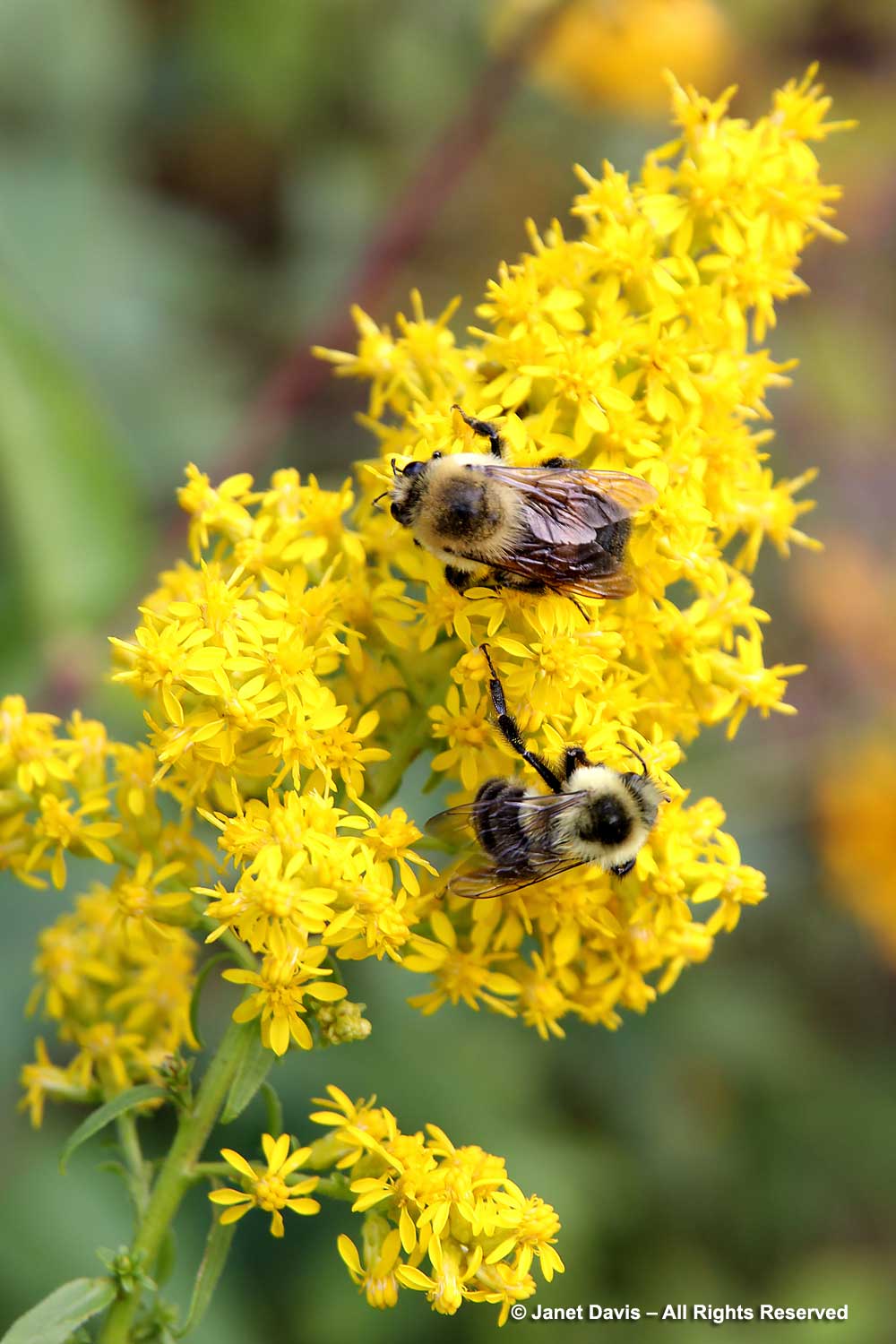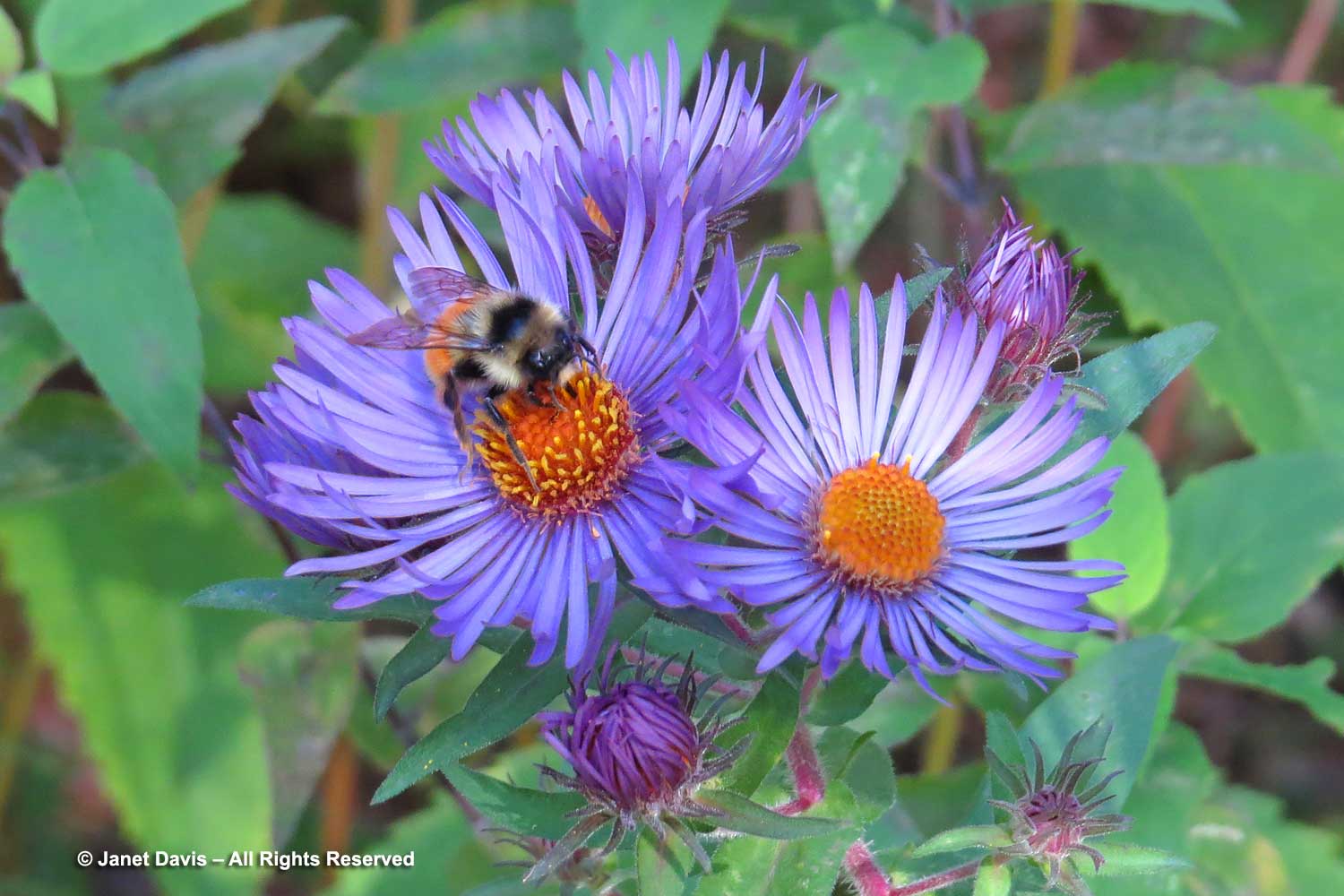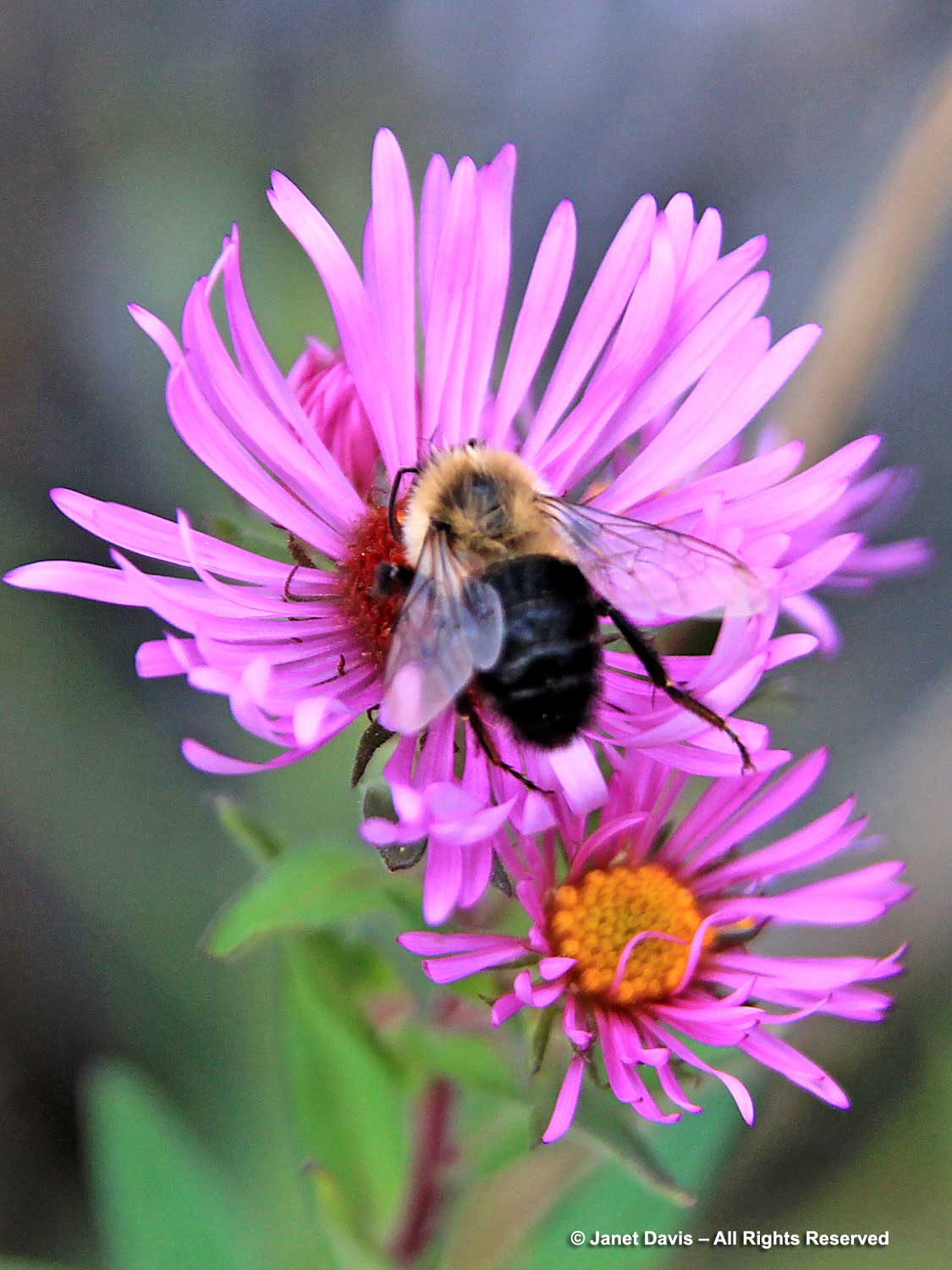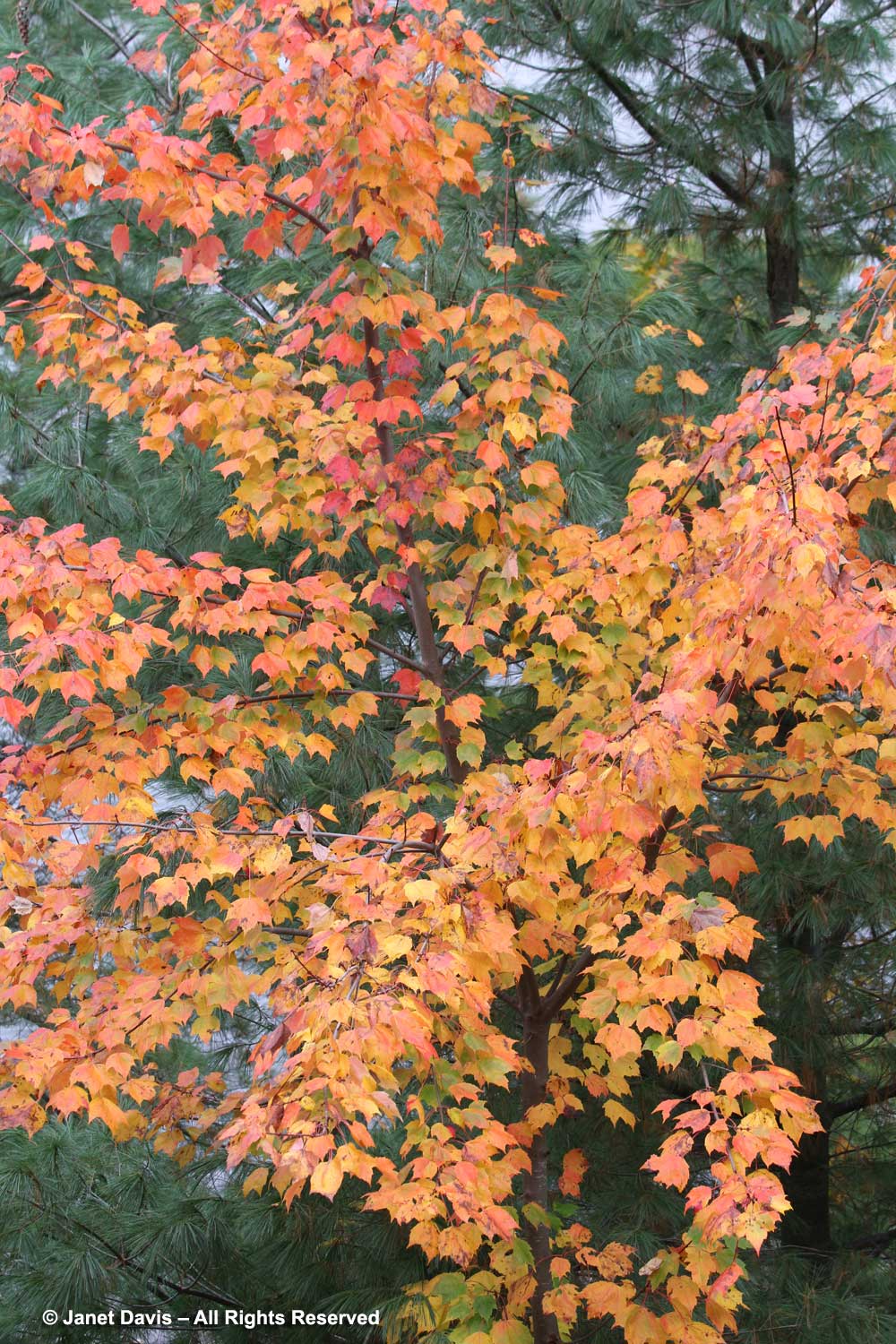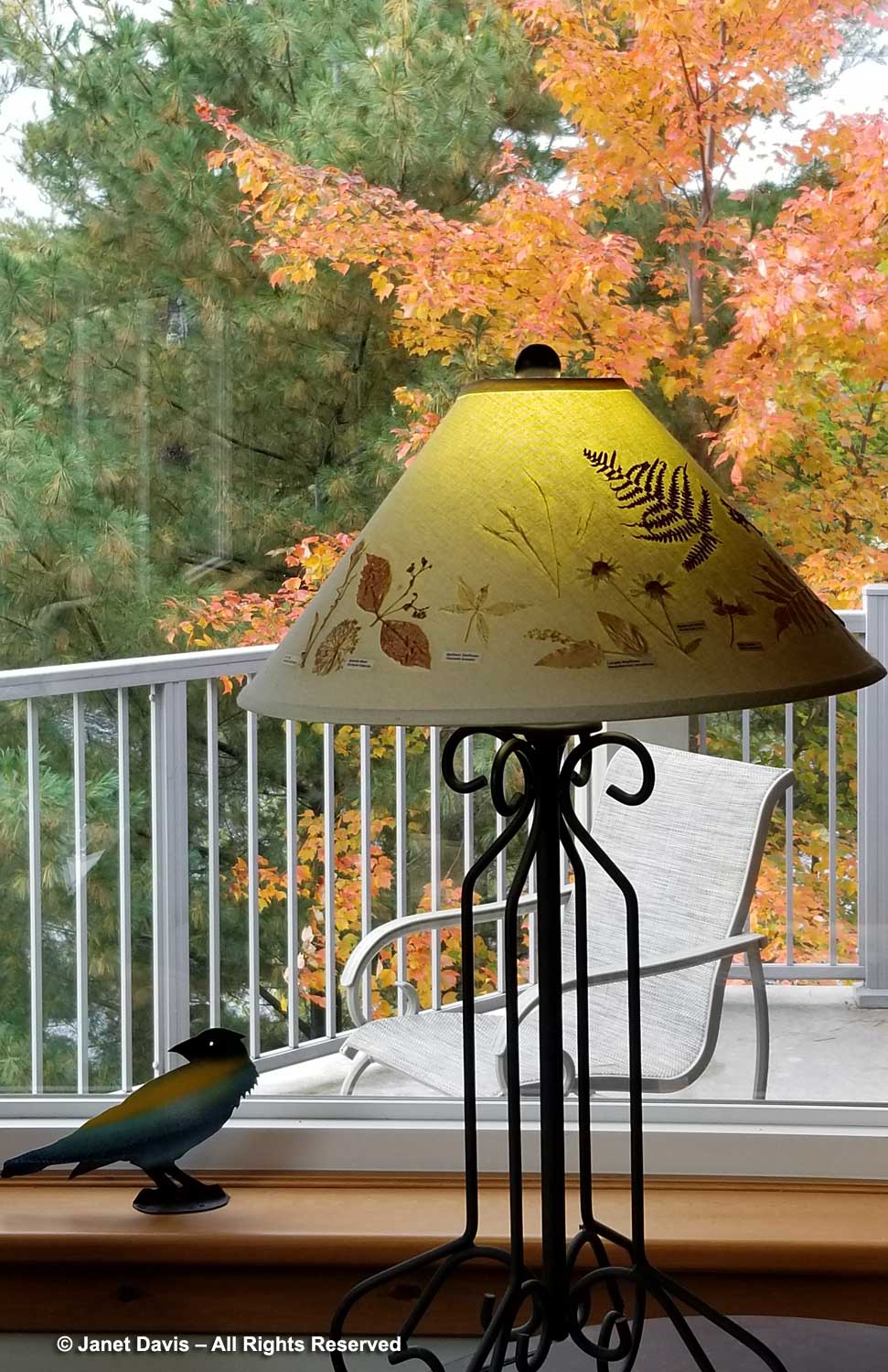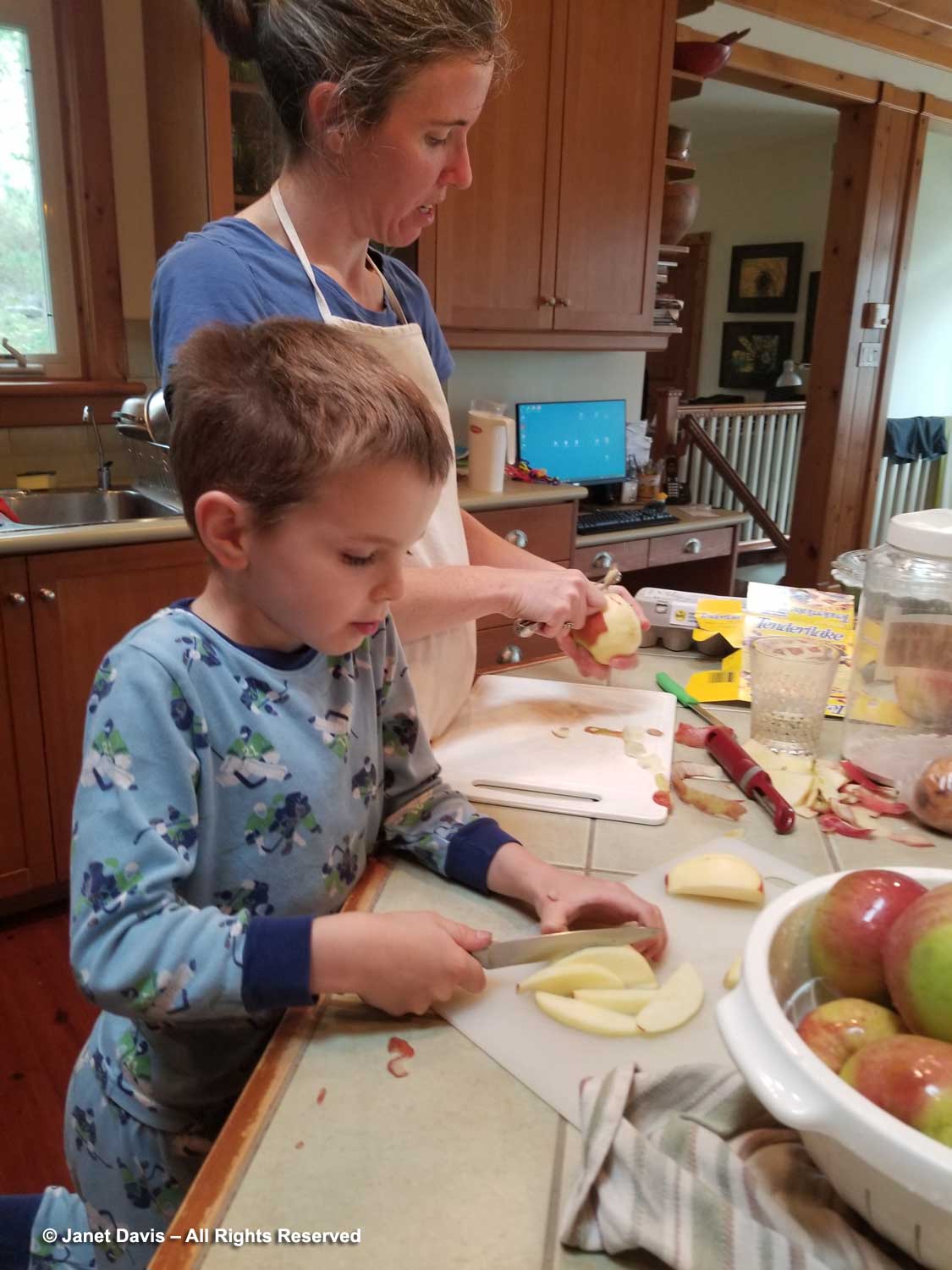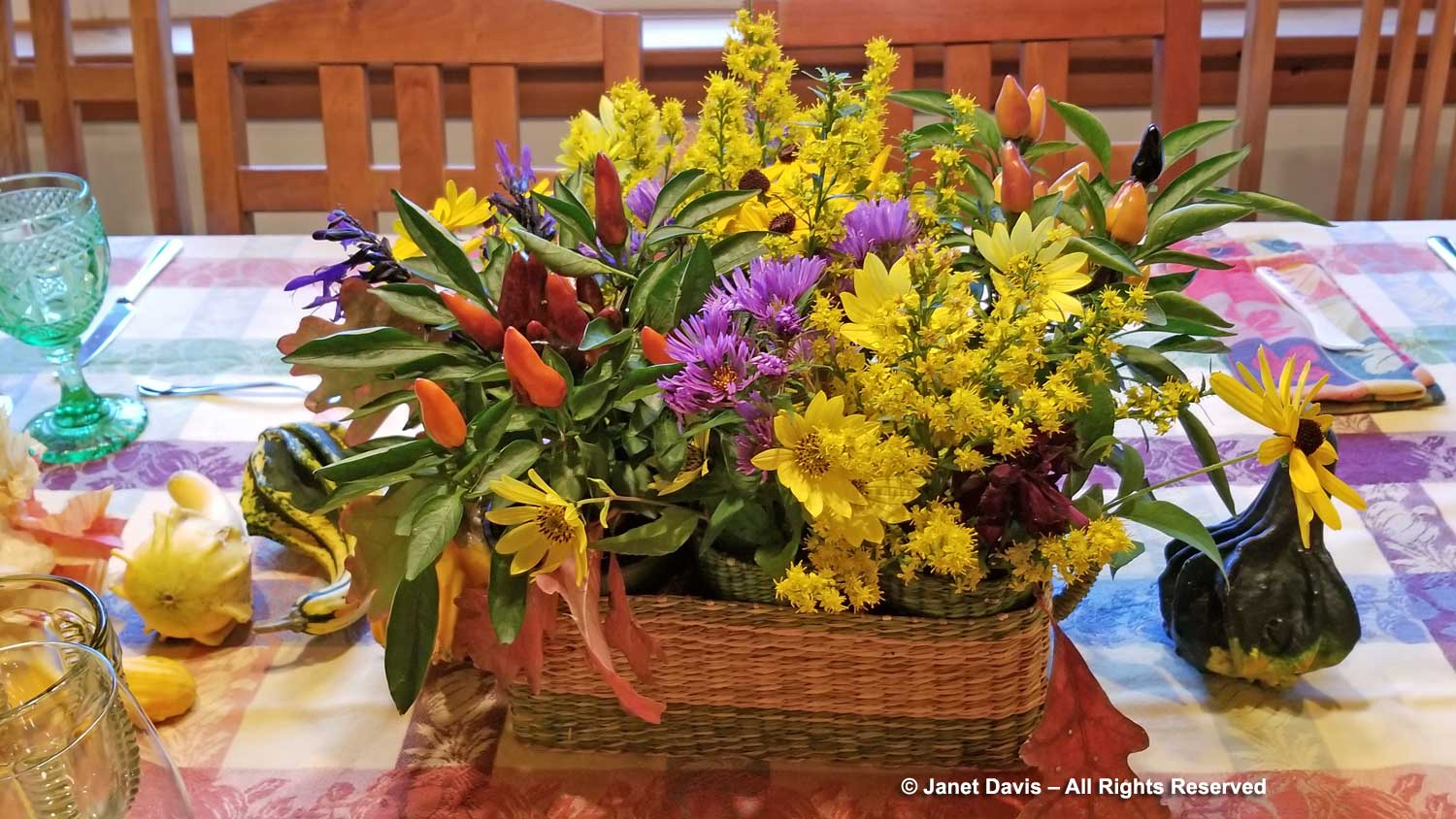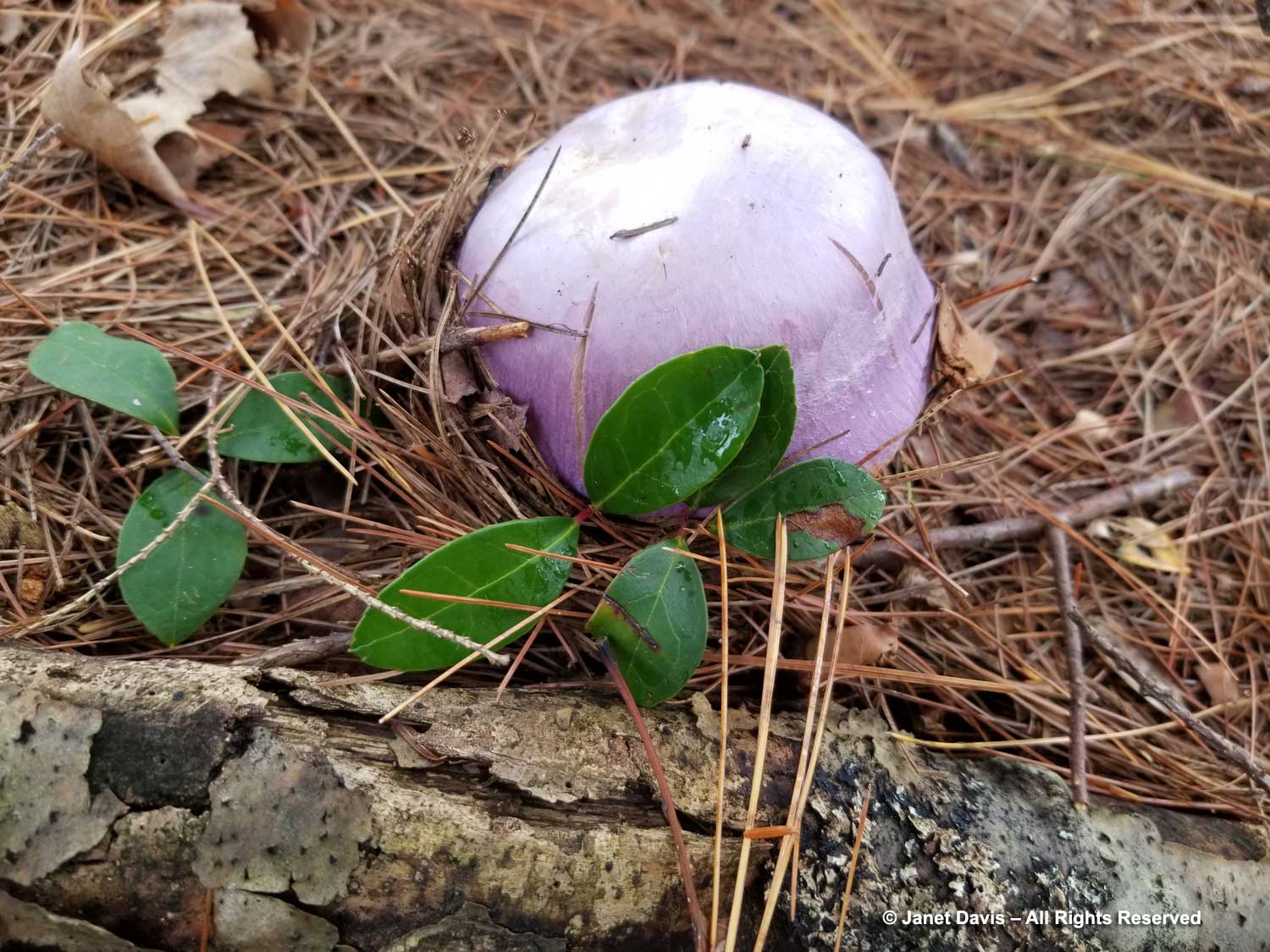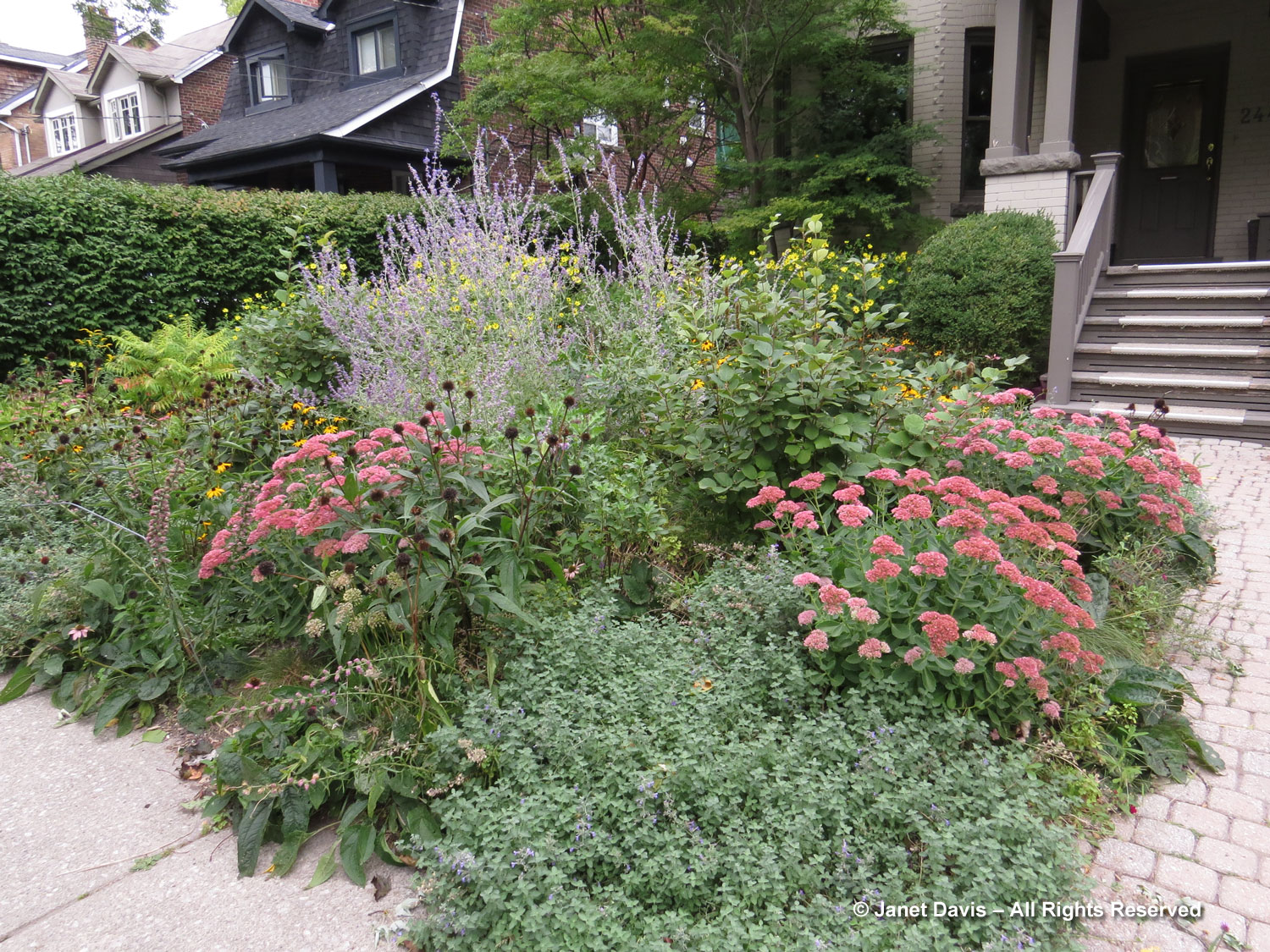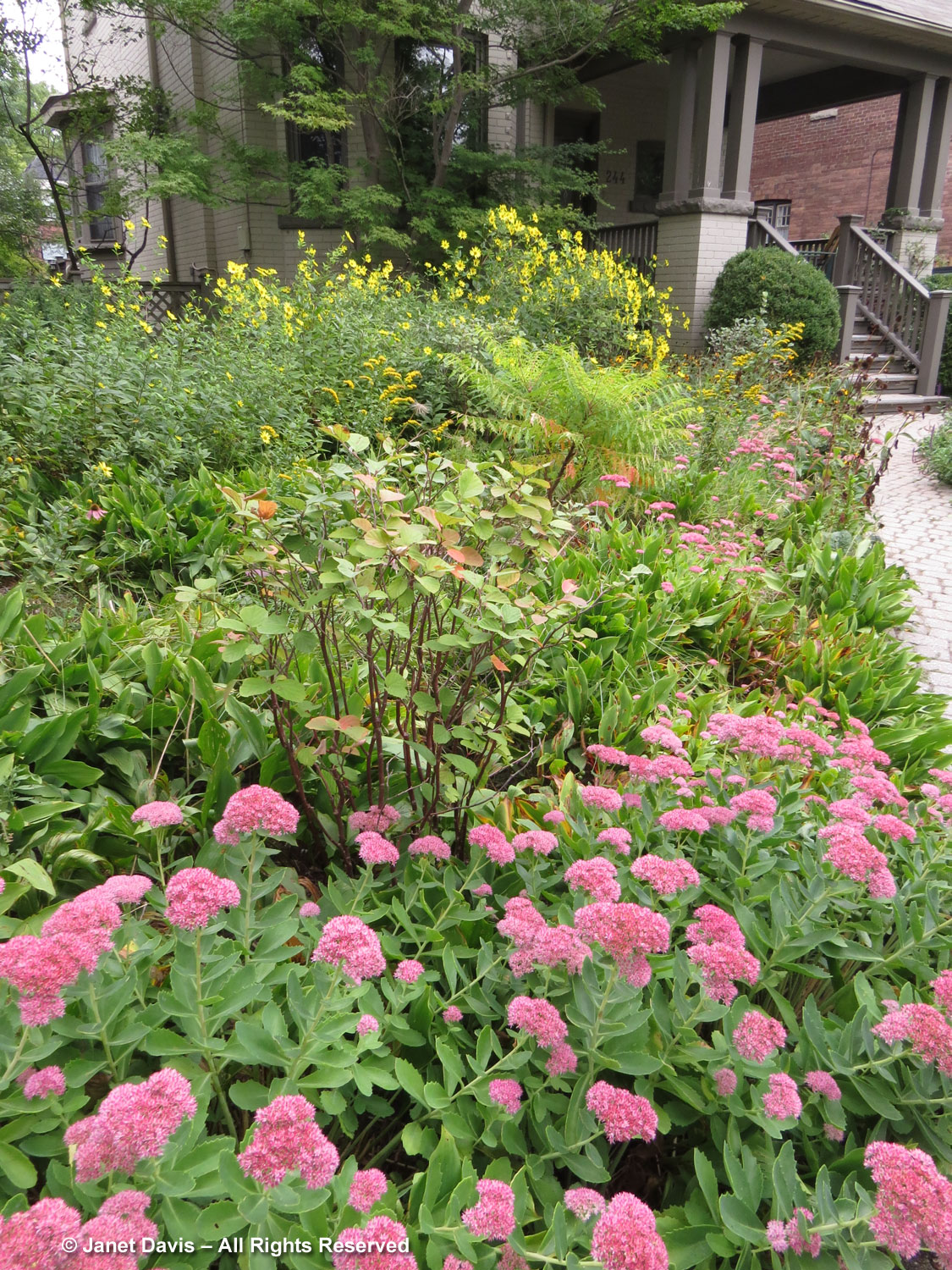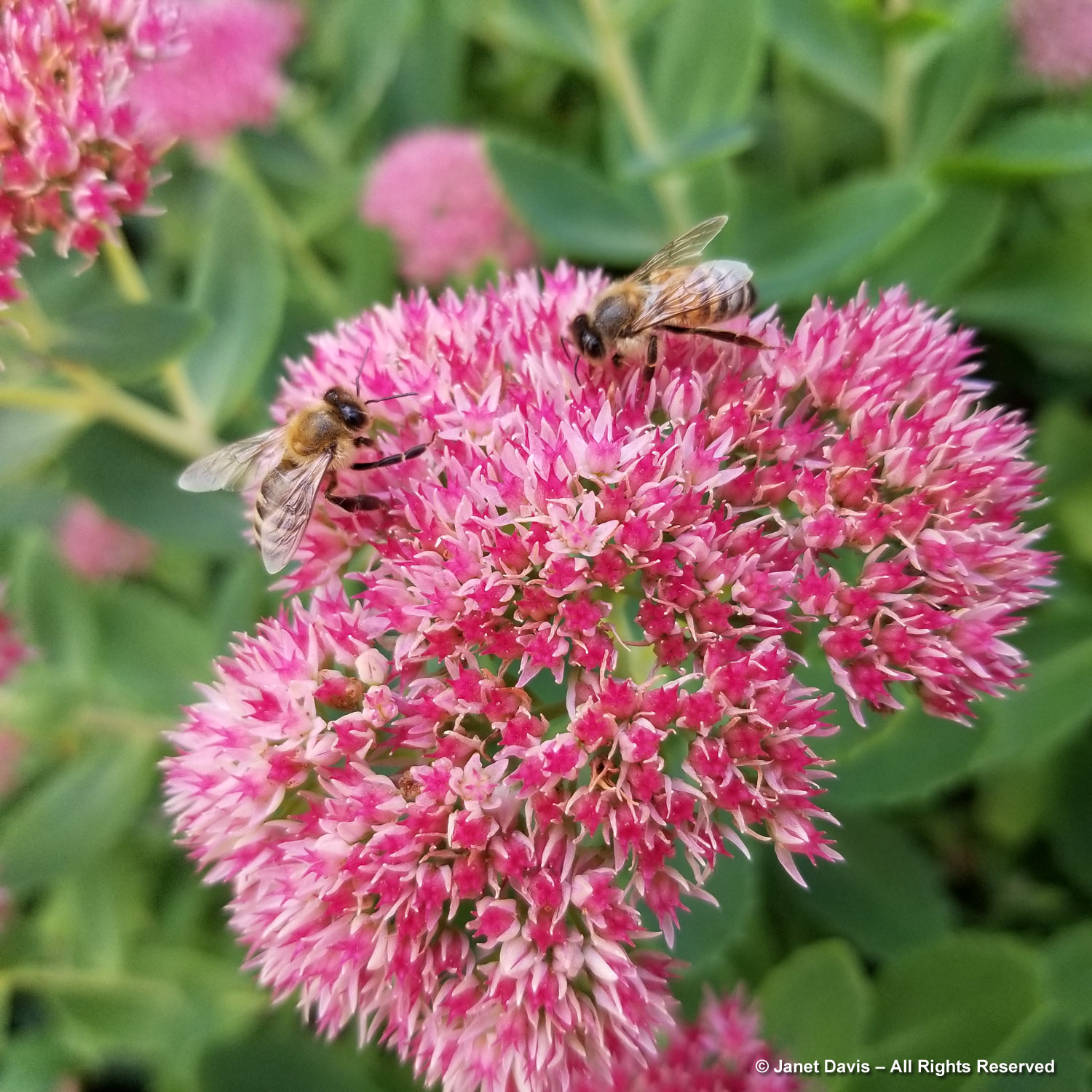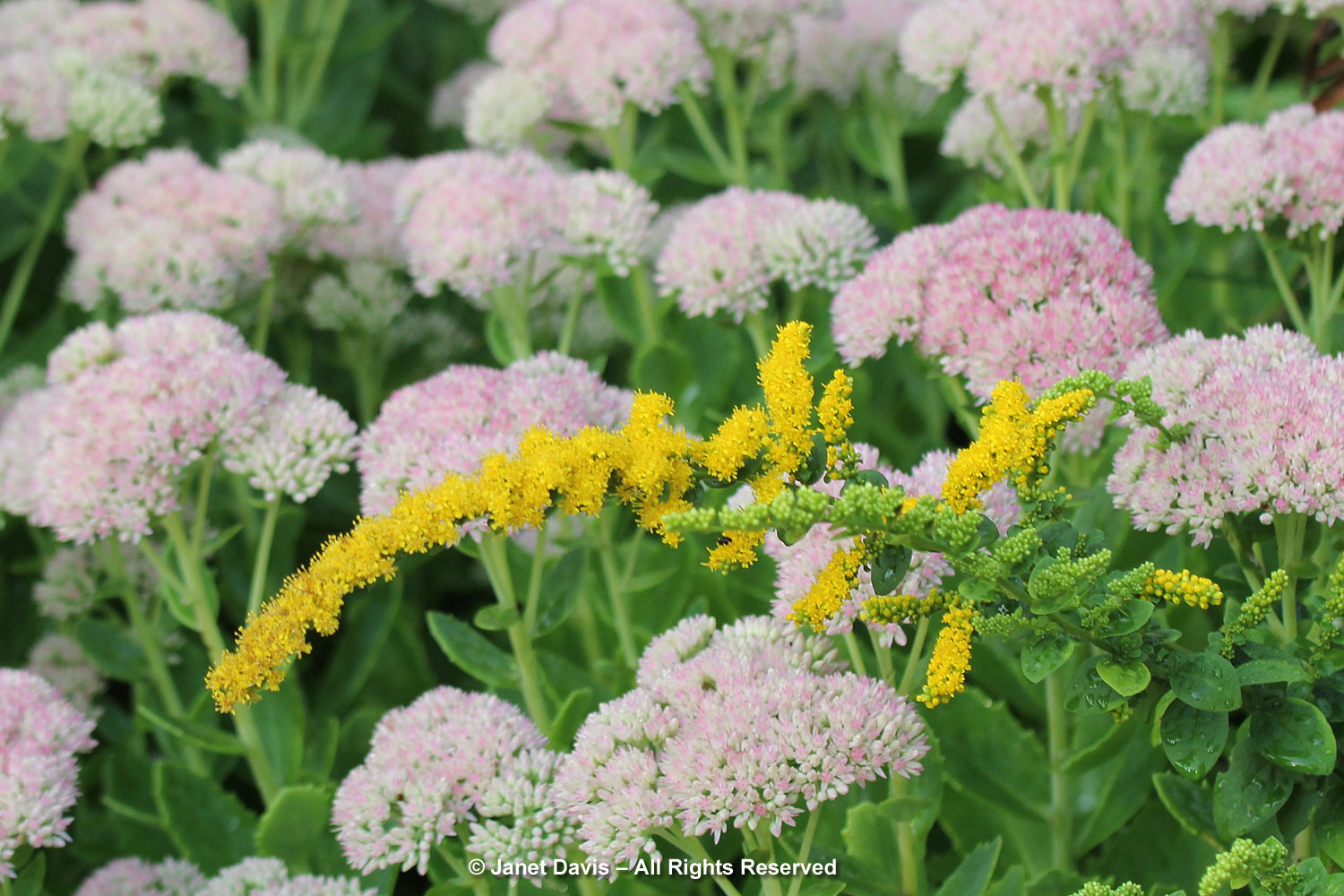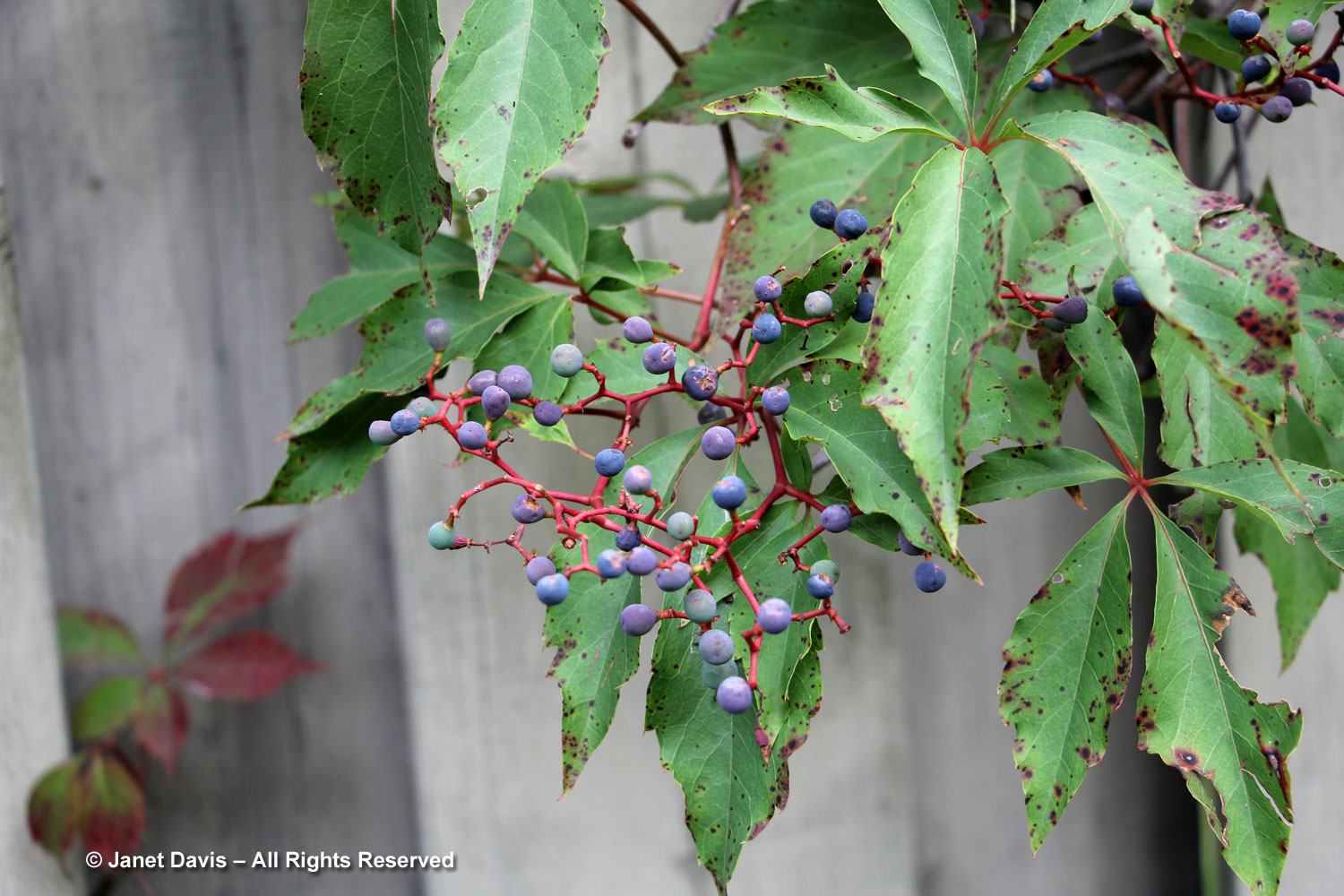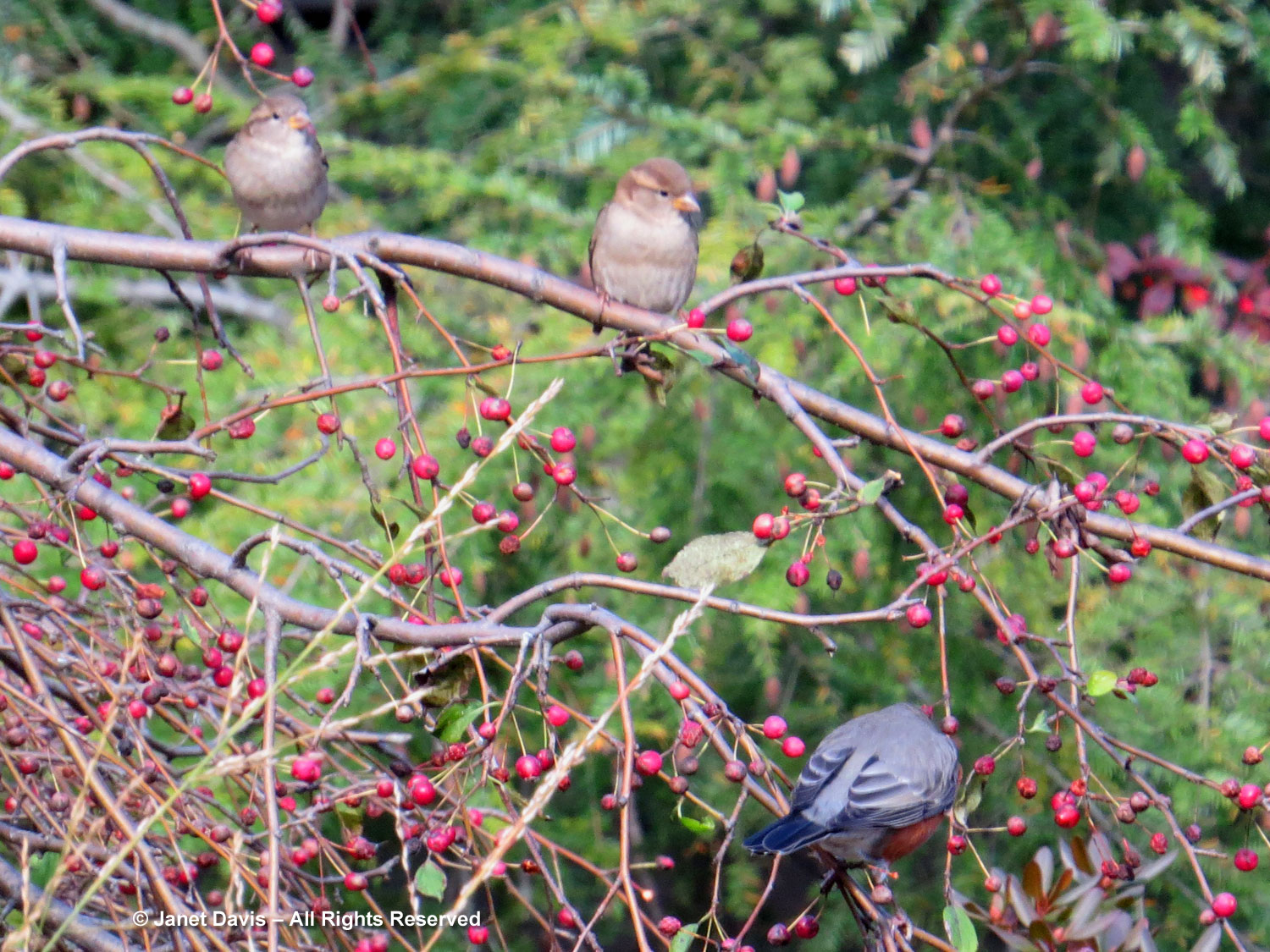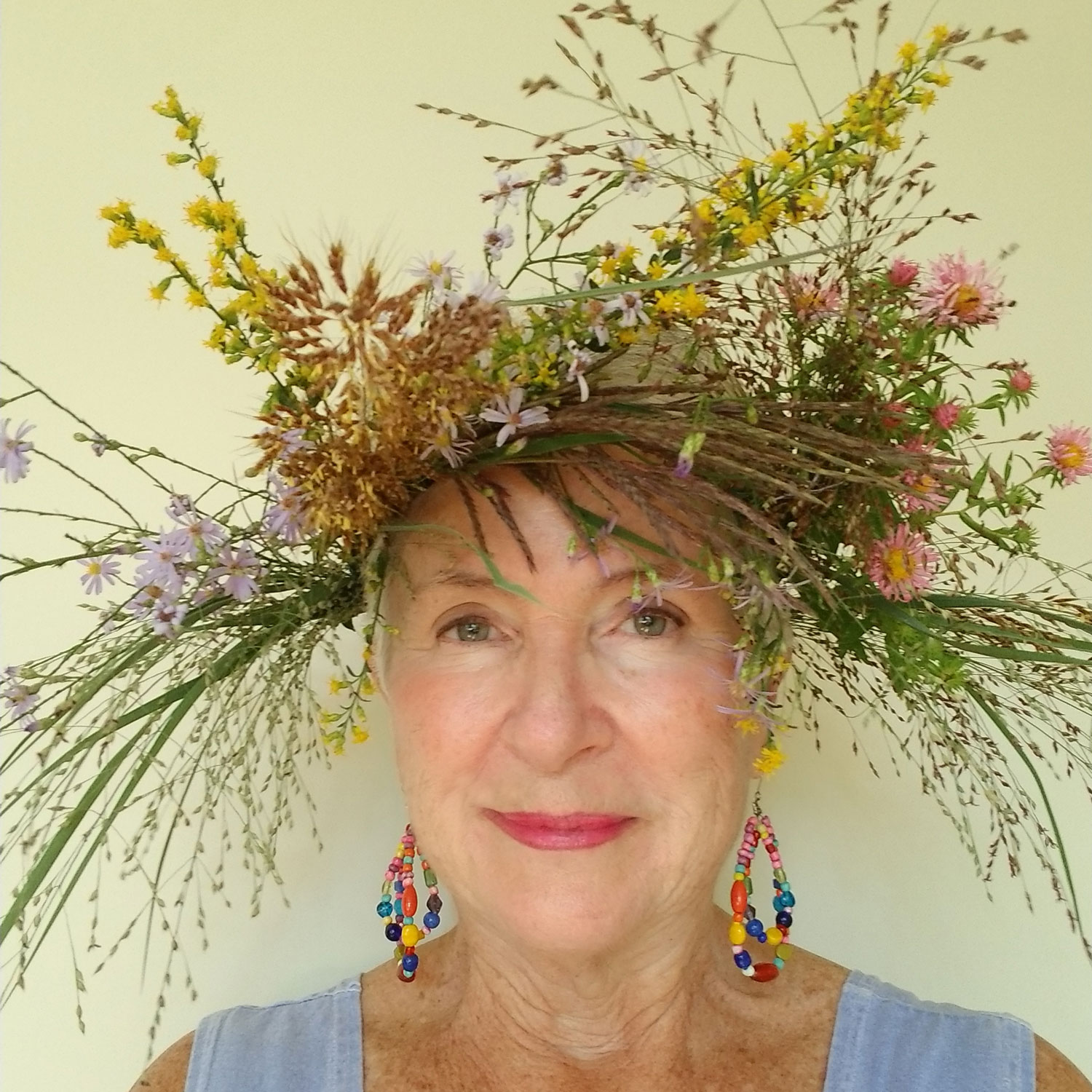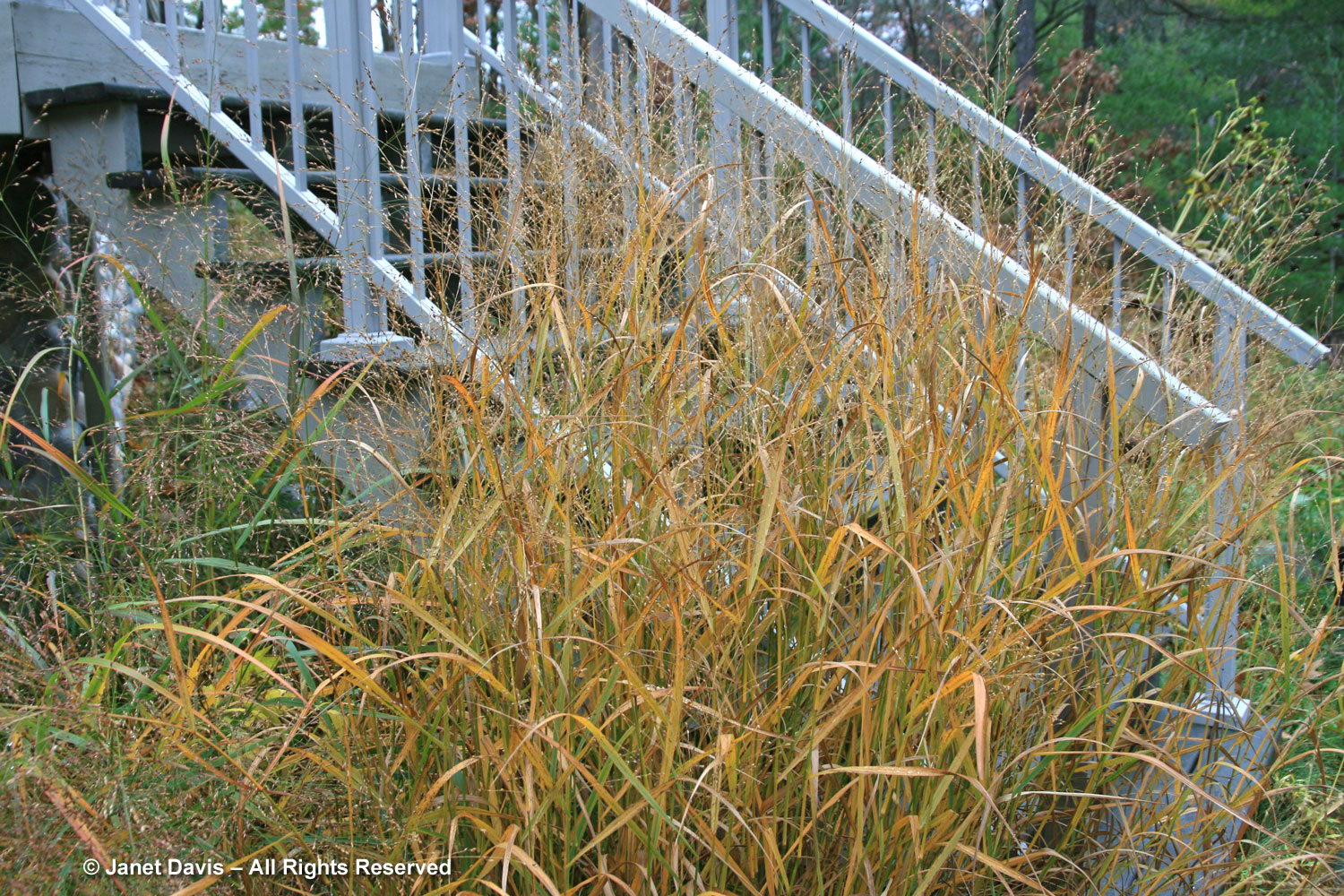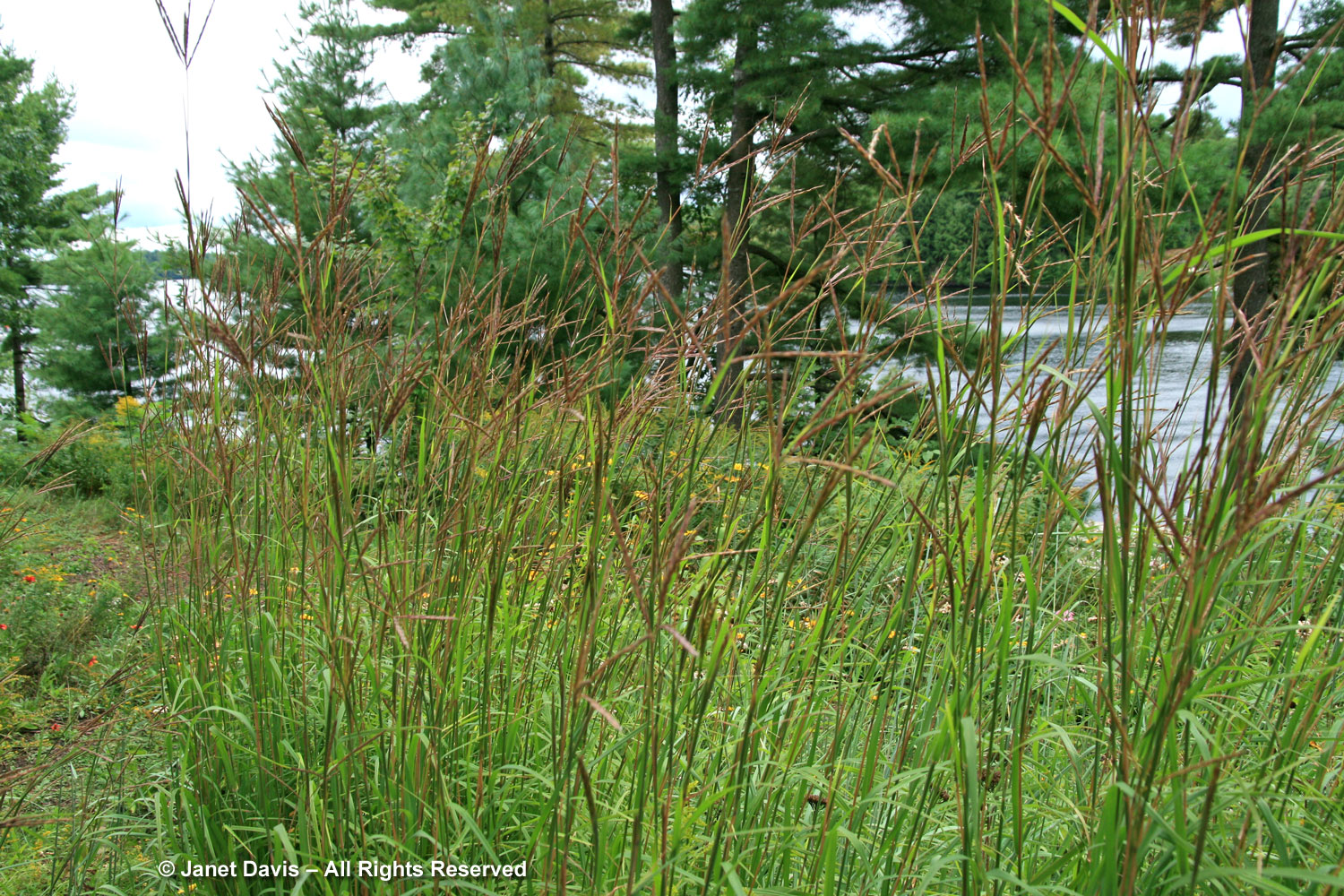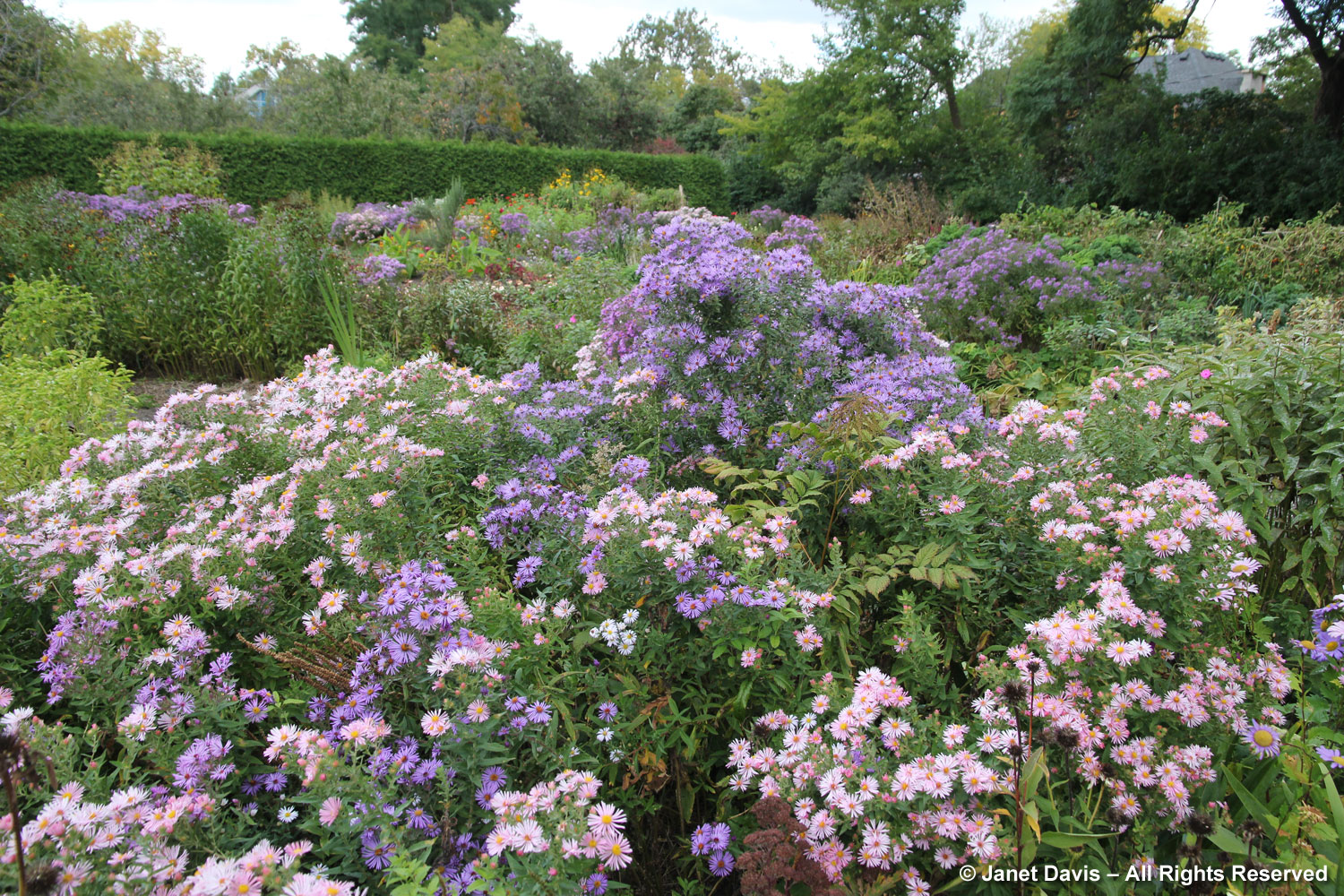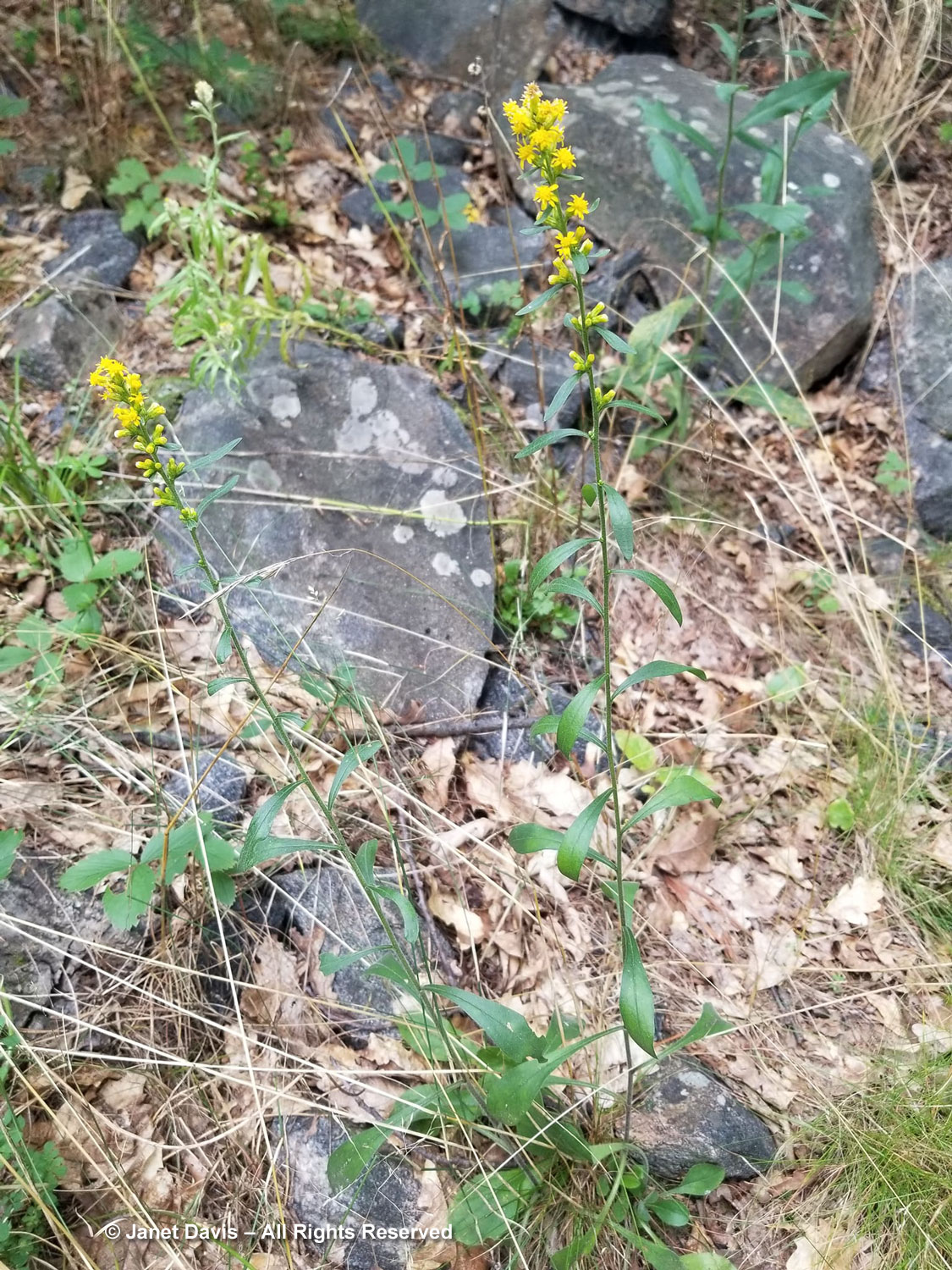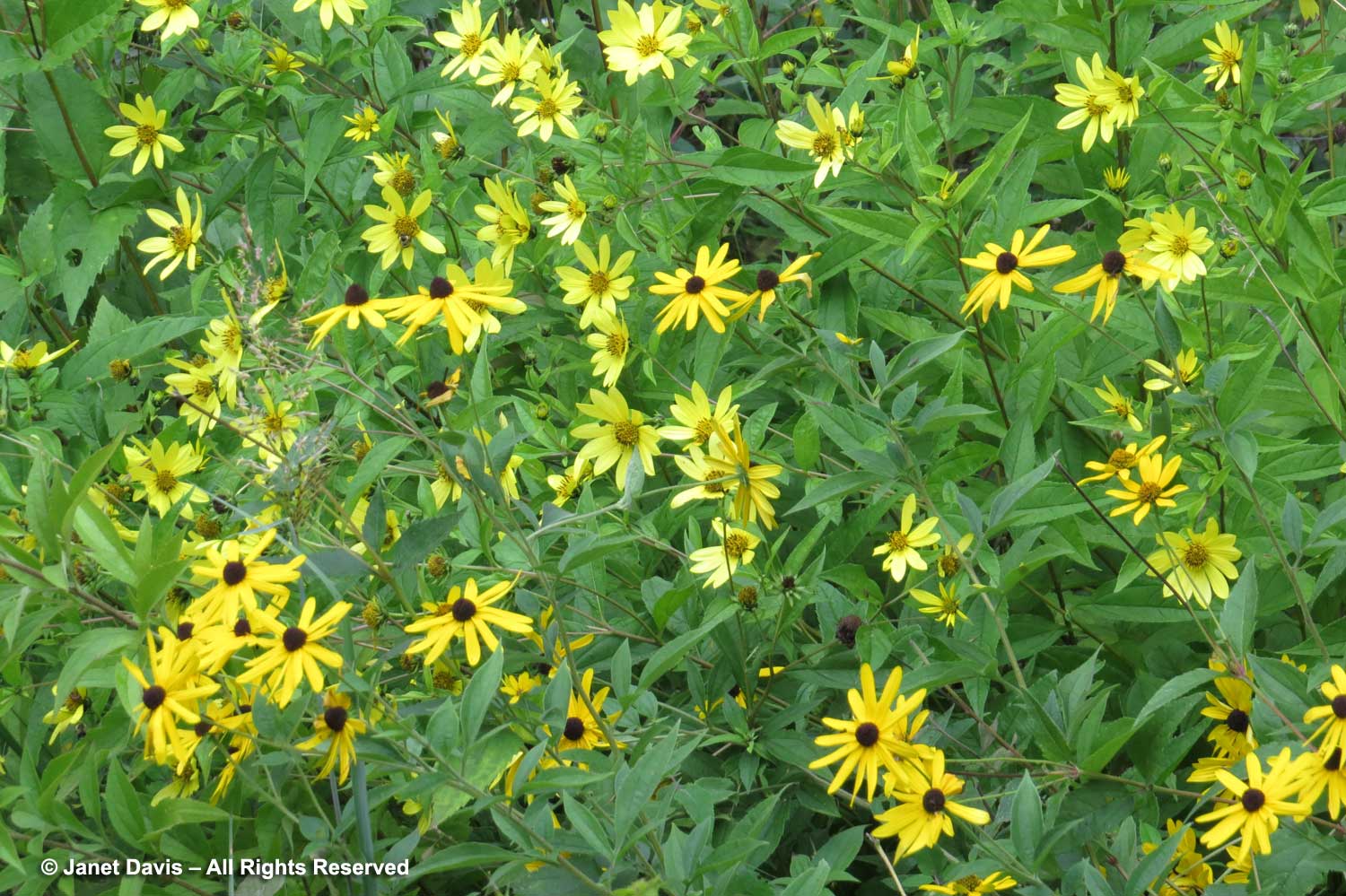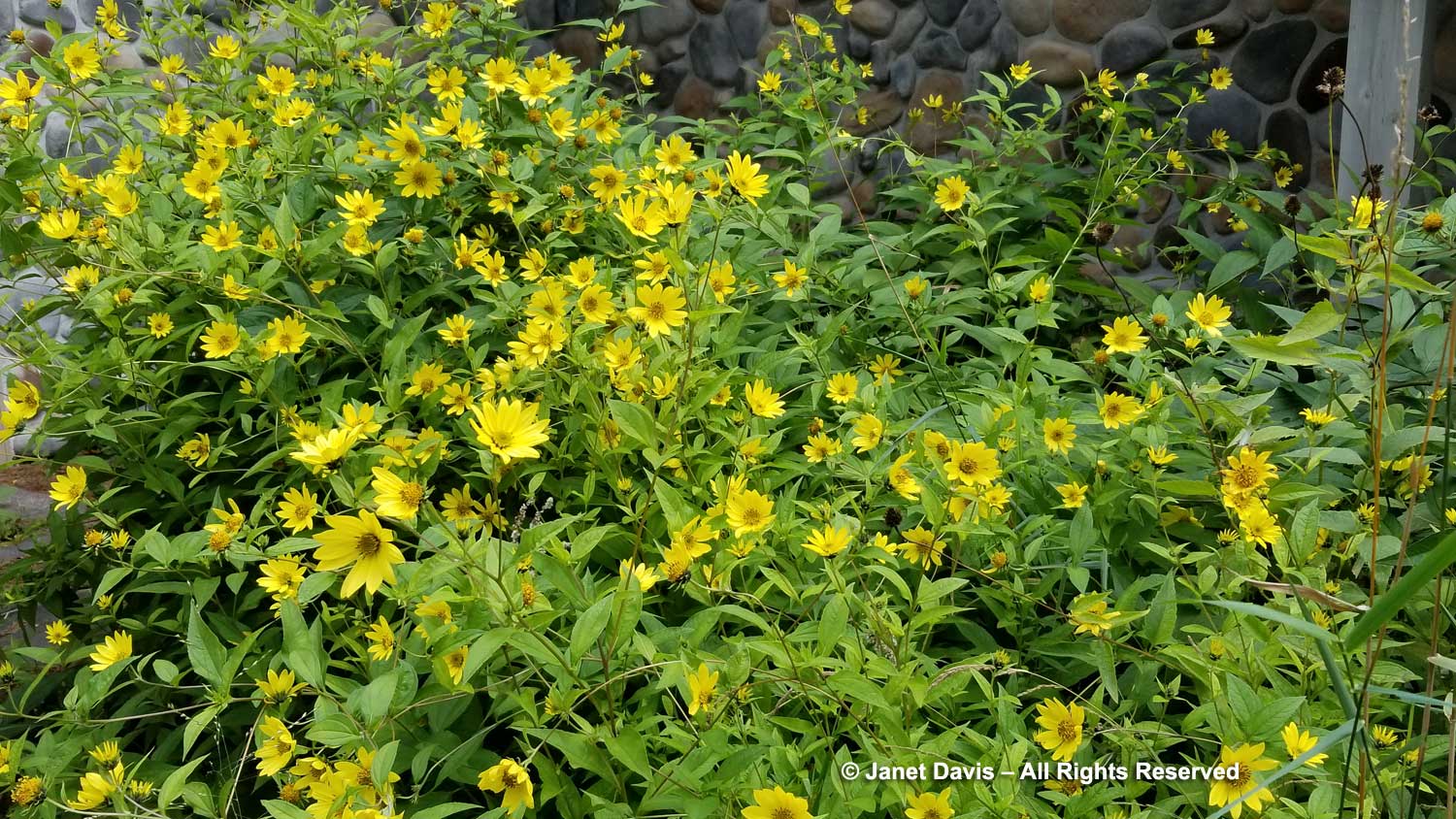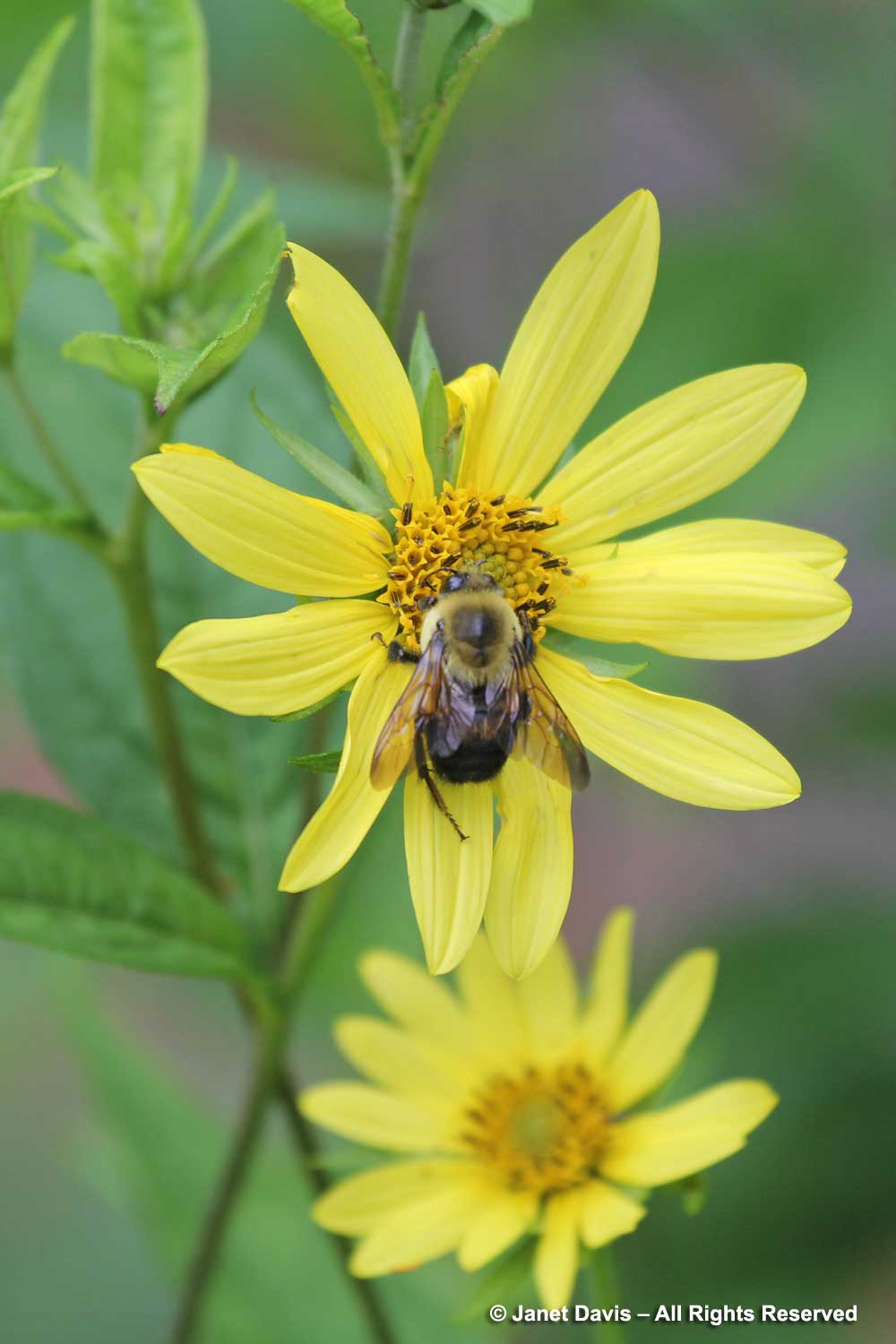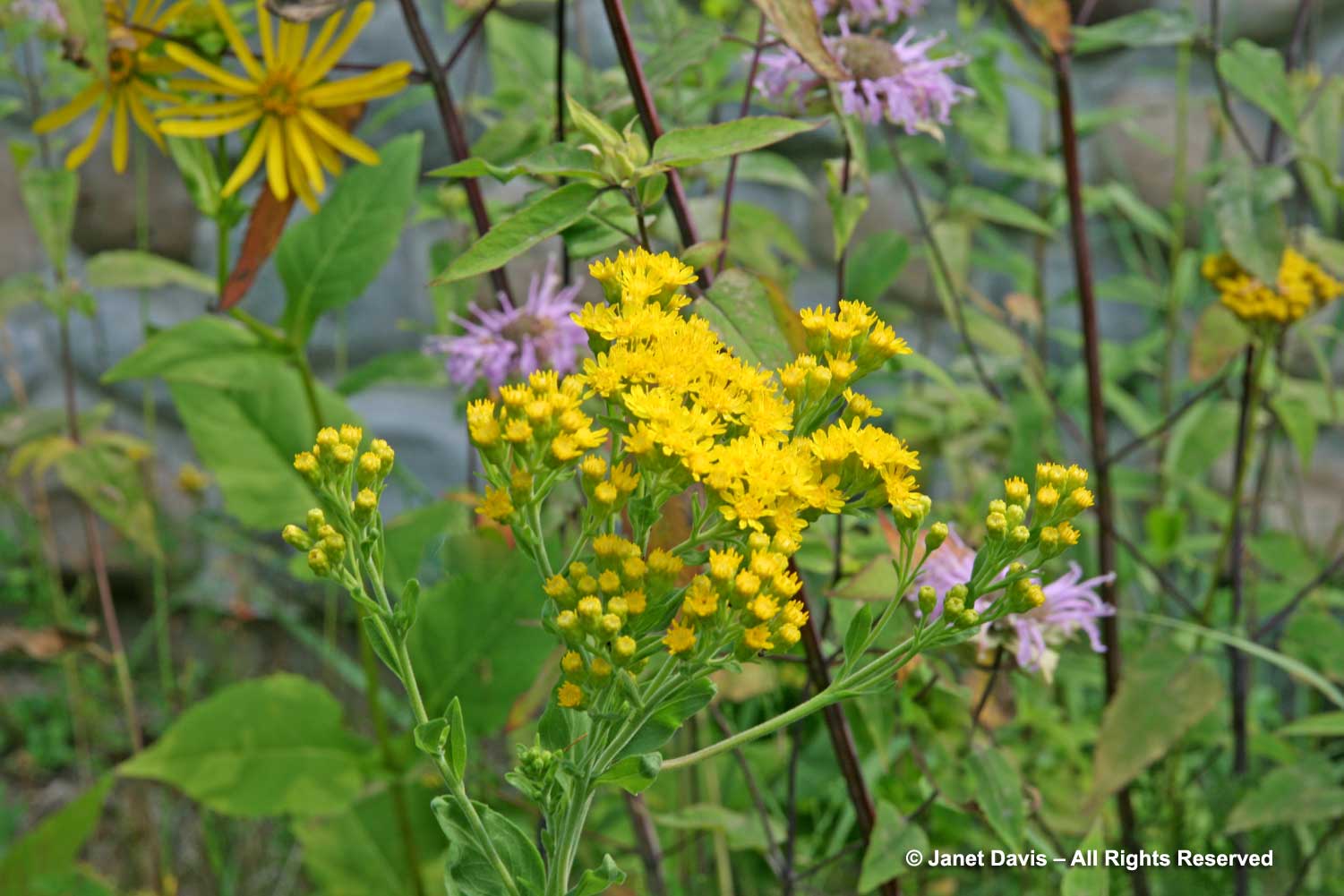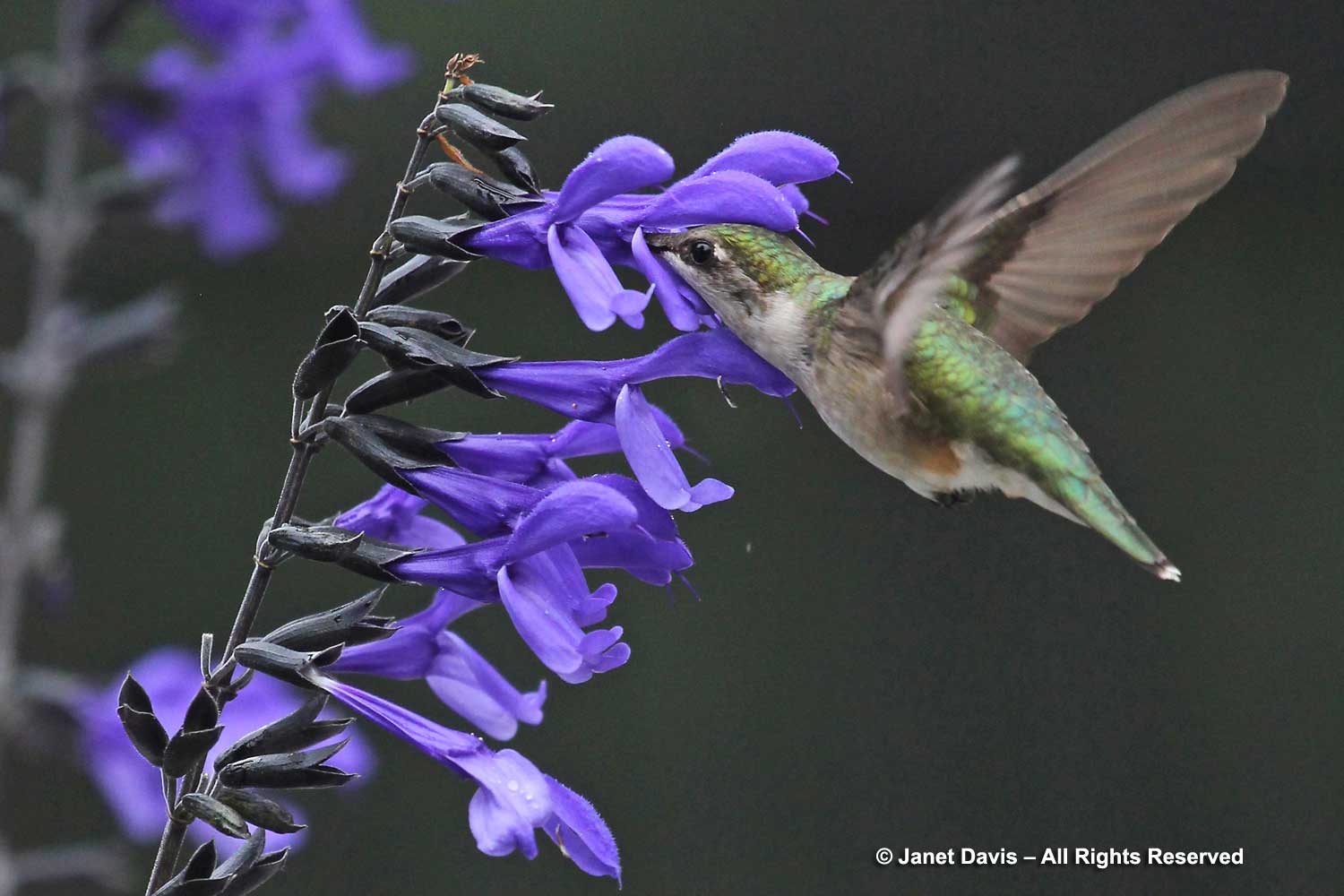For gardeners who lament the end of the flowering season in colder regions, my 25th fairy crown offers a reminder that there are perennials that offer bloom for the border – as well as the bees – well into October. But I will admit to a tiny bit of trepidation as I placed it ever so gently on my silvery locks. That’s because the indigo-purple flower is monkshood: one of the most toxic plants in gardening – and also one of my very favourite perennials. Meet Aconitum carmichaelii ‘Arendsii’, aka autumn monkshood. (More on the toxicity later.) The white flowers are autumn snakeroot or bugbane, Actaea simplex (formerly Cimicifuga). The violet-purple daisy flowers are ‘Hella Lacy’ New England asters (Symphyotrichum novae-angliae). And the leaves against my cheek are fall-coloured Tiger Eyes cutleaf staghorn sumac (Rhus typhina ‘Bailtiger’).

There’s a corner of my back garden where three of these plants grow together. I think they have done well there because it’s the lowest part of my garden – just by inches, but that means that table water goes there naturally. Also, it’s the right amount of light for them, being somewhat shaded by the cedar hedge and surrounding trees. But I do give the monkshood supplemental water when I’m around. And I realized that other monkshood stands in my garden have suffered in the summer months when I’m at the cottage since they’re not drought-proof by any means. They also like rich soil and (note to self) are overdue for a good feeding of compost in the spring.

I happen to be very fond of blue and white used together in the garden (and have a large photo library devoted dozens of excellent examples of the combination), so this particular autumn pairing pleases me very much.
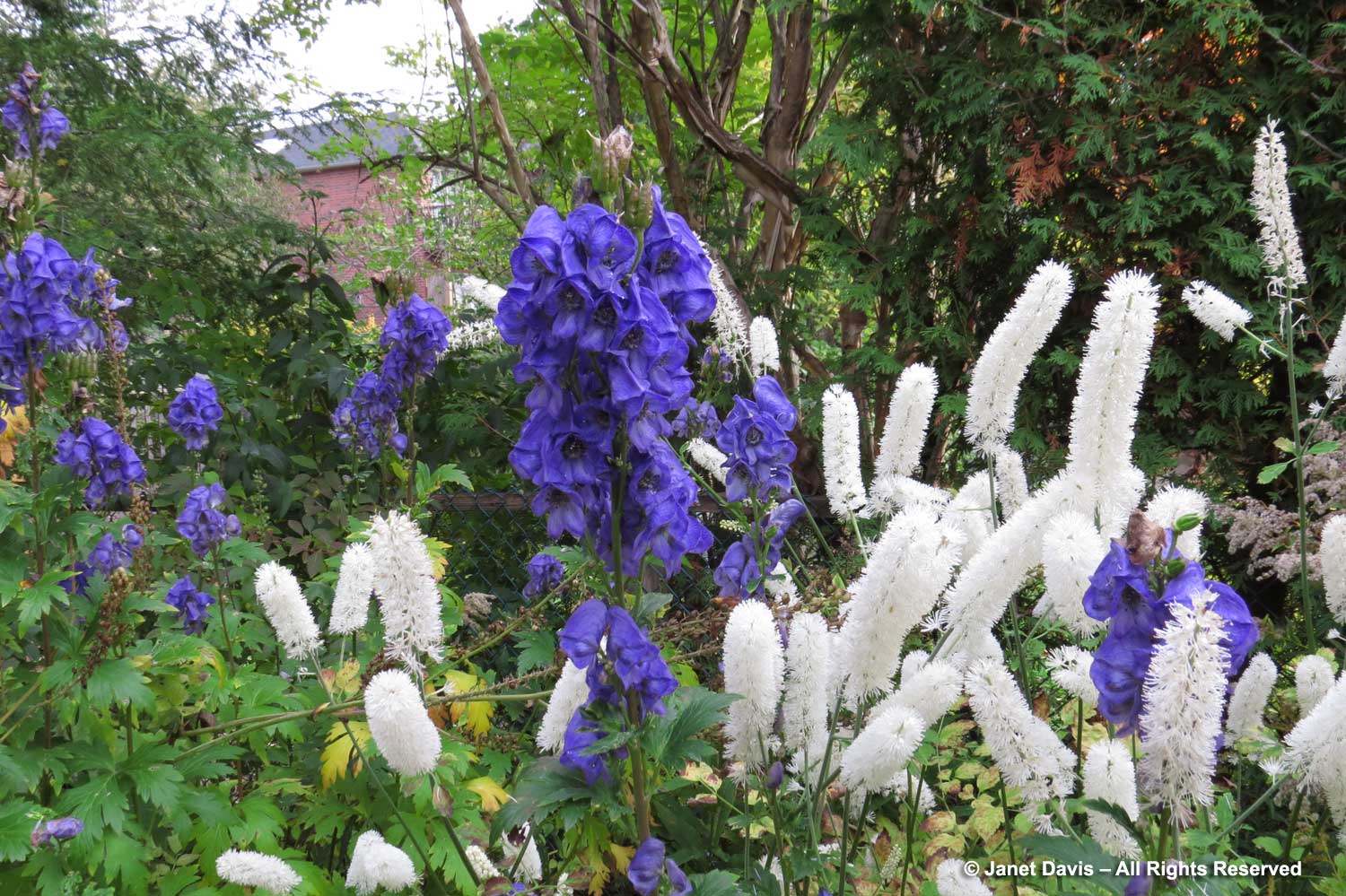
In some light, autumn monkshood looks deep indigo-blue; in others, there’s a purplish sheen. Years ago, when I realized how much I loved this perennial, I got busy dividing my first plants and moving the clumps around in spring. Take care to use thick gloves if you do this, especially if you have open cuts or scratches, because the tabloid stories of “murder by monkshood” are a little startling, though actual living monkshood plants are not usually to blame. In Toronto this summer, twelve people were hospitalized after eating at a Chinese restaurant because a spice was accidentally contaminated with an aconite powder from a different species used in traditional Chinese medicine. Still, if you have dogs that like to eat garden plants or young children who might be tempted, you might want to skip my favourite perennial! (For everything you could possibly want to know about monkshood toxicity, read this article by the American Association for Clinical Chemistry.)

It’s obvious how Aconitum species got their common name, for the upper sepals of the flowers do resemble the hooded cloaks of medieval monks. I love those black stamens tipped with white pollen and often see honey bees and bumble bees foraging in them too. ‘Arendsii’ is a hybrid cultivar developed originally by German nurseryman Georg Arends (1863-1952) at his nursery near Cologne. Around 1945, he crossed A. carmichaelii and A. carmichaelii var. wilsonii to produce the plant. Owing to its variability, the cultivar is sometimes called the “Arendsii Group”.

Monkshood’s colour appeals to me, obviously!

Because autumn monkshood generally blooms between Canadian Thanksgiving (second Monday in October) and Remembrance Day in November, the plants can be hit by an occasional early snow…..
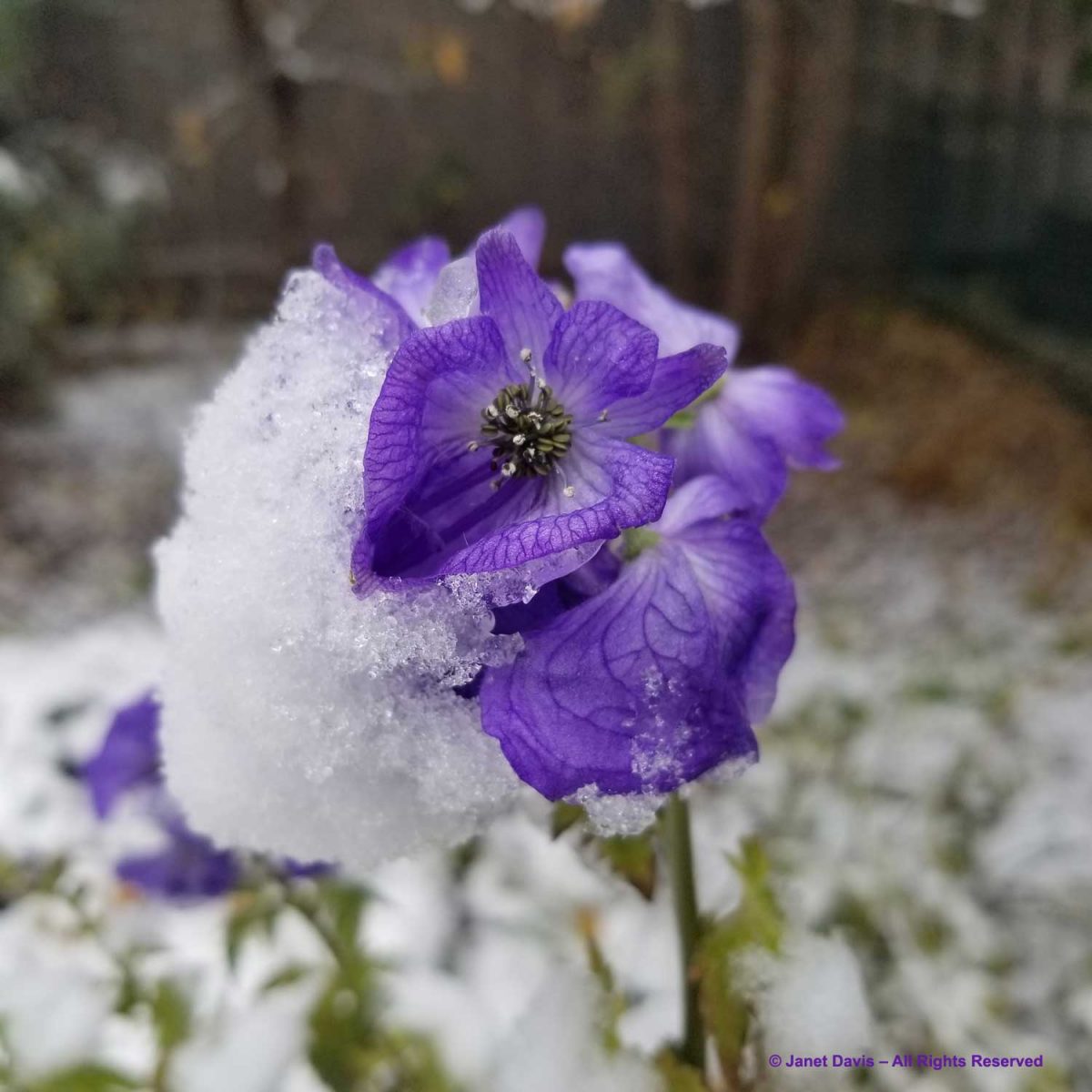
…. heavy enough to take the flower-laden stems to the ground.

Autumn snakeroot (Actaea simplex), by contrast, isn’t known to commit murder but the genus does have some toxic species, so don’t eat it! Related and similar-looking to the summer-blooming Ontario native snakeroot, Actaea racemosa, it hails from northern Russia, western China, Manchuria, Mongolia, Korea and Japan. It has a delightful fragrance that reminds me of incense. (I’ve written previously about this one in White Flowers for Sweet Perfume.) Oh, and that big, reddish shrub in the background is native alternate-leaved dogwood (Cornus alternifolia).
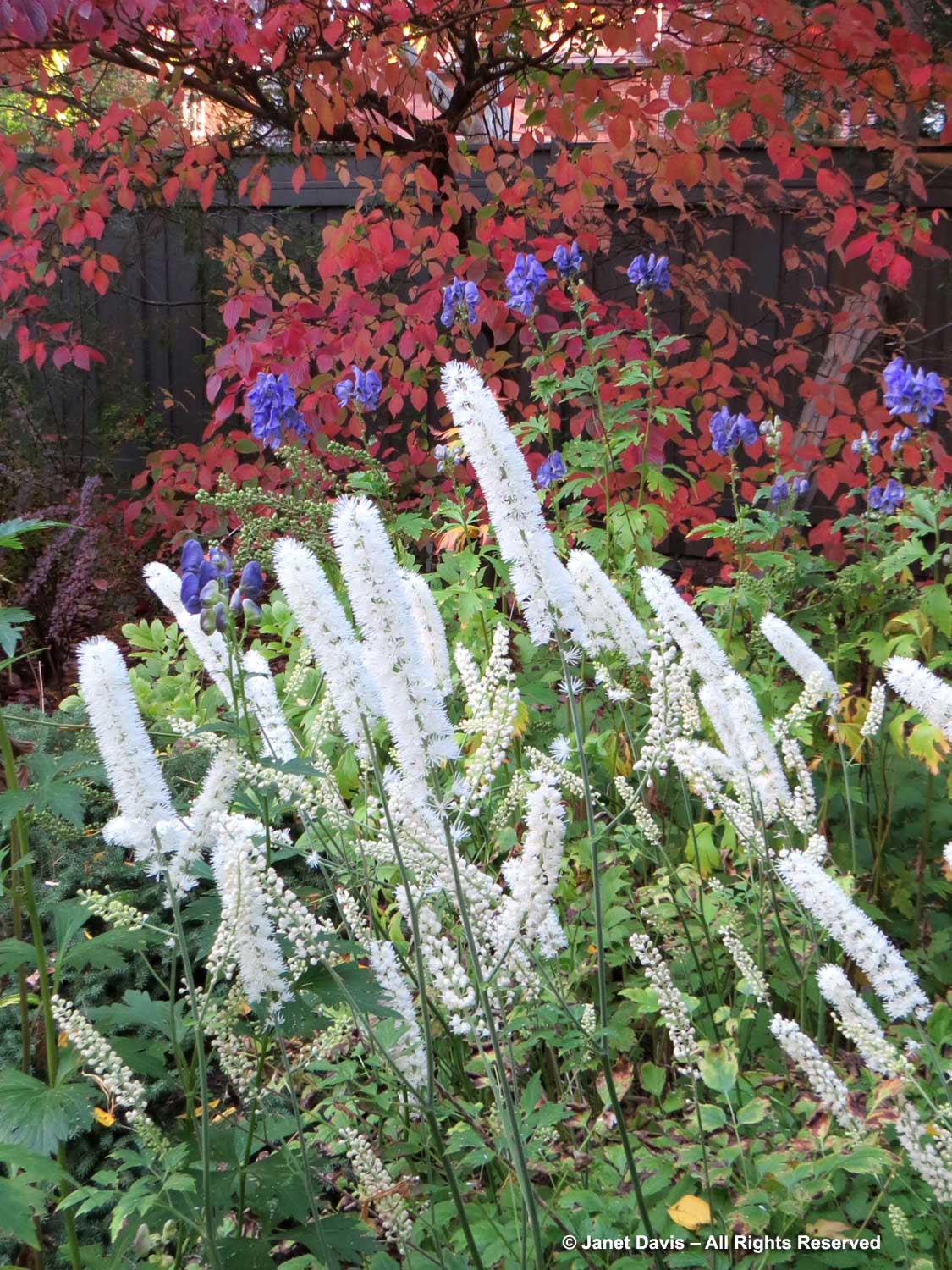
On a warm, sunny October day, the spike inflorescences are alive with all kinds of bees and flies, including bumble bees.

I do love Tiger Eyes® cutleaf staghorn sumac (Rhus typhina ‘Bailtiger’) in all seasons, though it is not without its drawbacks. Like the regular native species, parts of it seem to die off each summer. As well, its rhizomes travel a long distance – in my garden, right under a patio to pop up perkily beside my pond. I’ve dug up and re-planted some of these seedlings, being careful to cut the rhizome first and give the new plant time to heal and form feeder roots. But nowhere is the plant as happy as in its original corner, in rich, moisture-retentive soil. It has bright chartreuse foliage in spring and early summer and the fuzzy red fruits feed the resident cardinals and robins throughout winter. But it’s that brilliant apricot-orange foliage that is impressive right now.
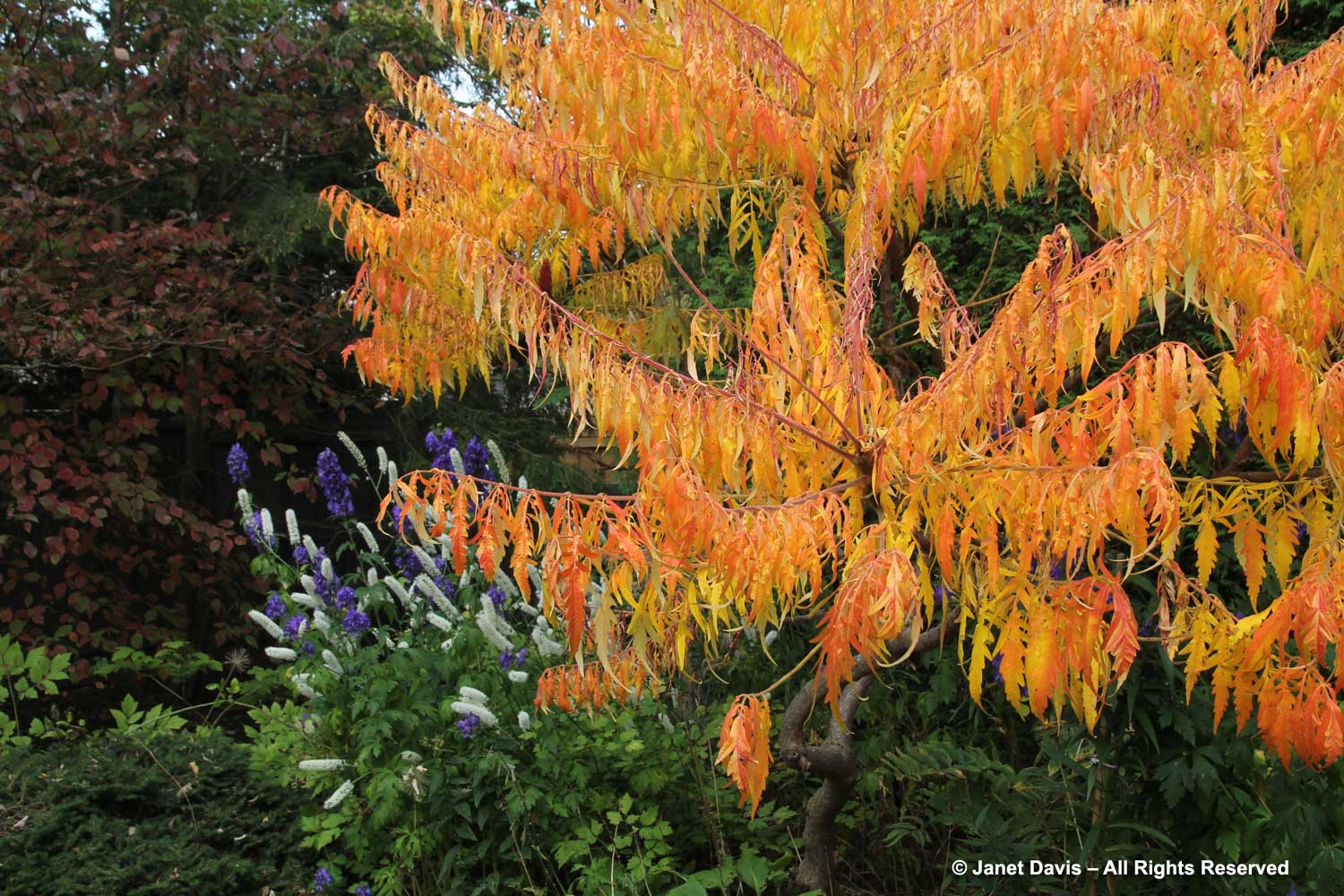
Another fall favourite in my back garden is Molinia arundinacea ‘Skyracer’. When it flings those flowering stems out like a bouquet, then turns bright-gold, it’s a sight to see.
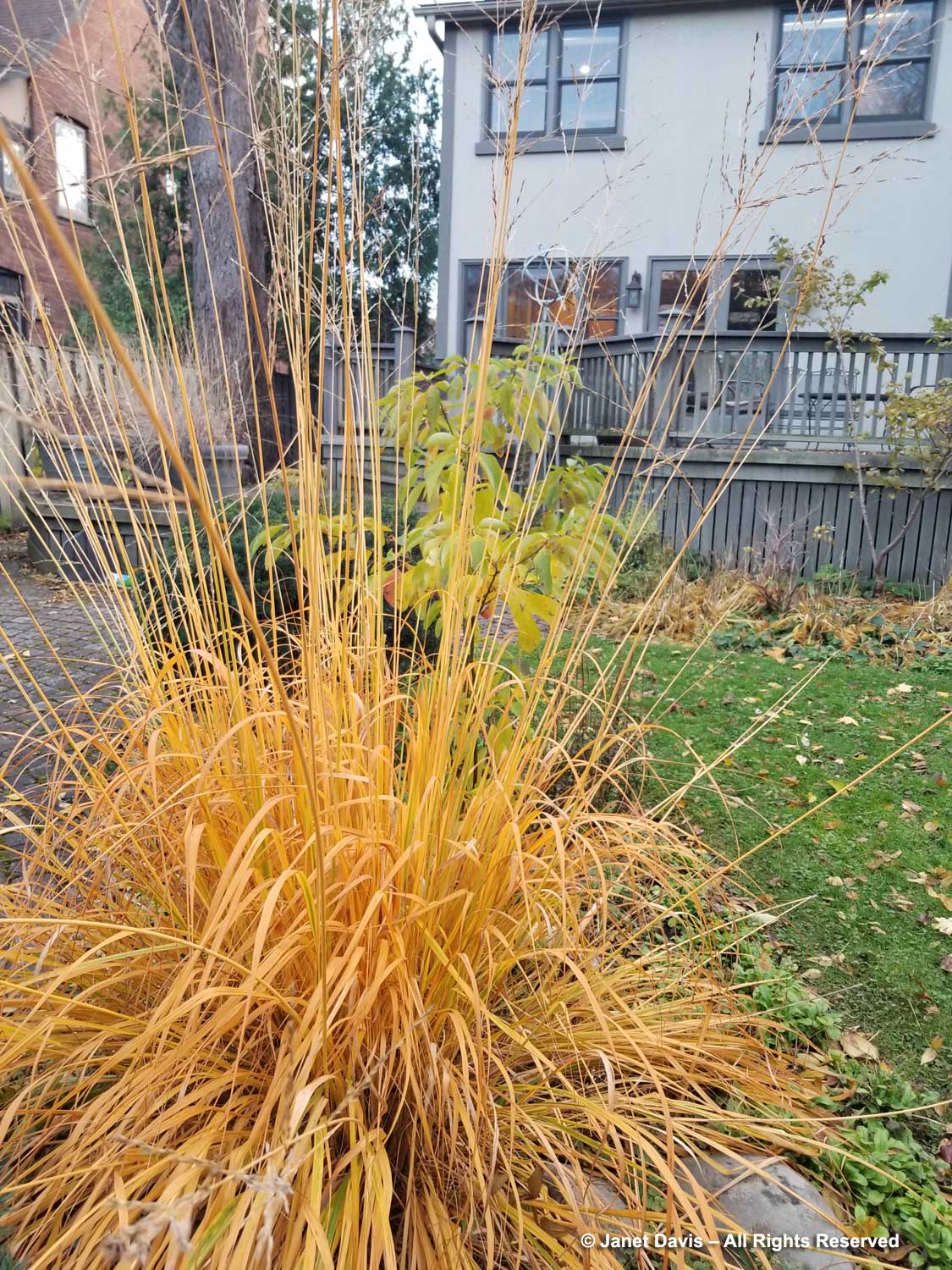
Here’s my autumn kitchen view into the back garden right now, over the lower-deck pots with their tough-as-nails sideoats grama (Bouteloua curtipendula). There’s a mellow quality about October that is such a relief, after the jungle growth and heat of summer.
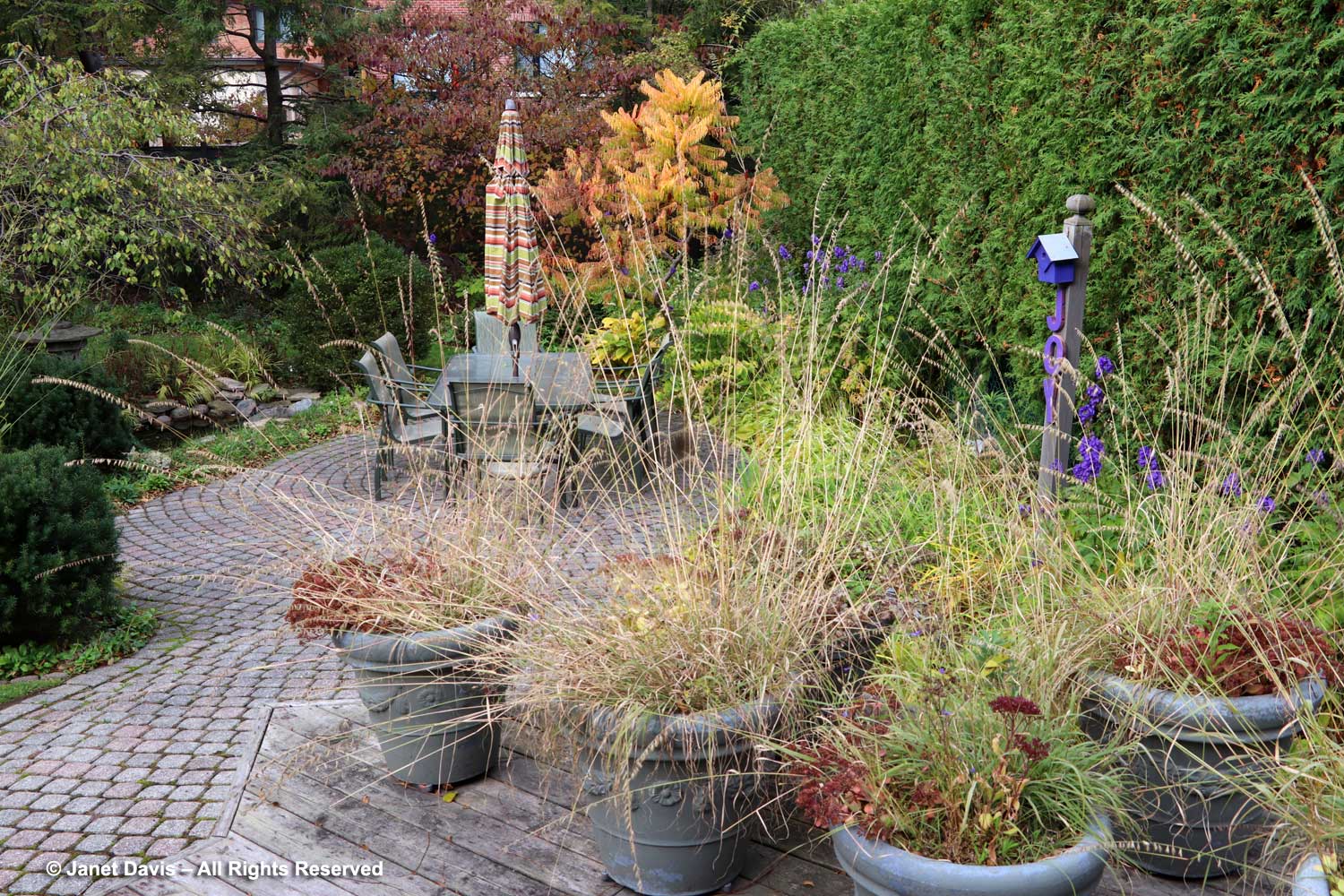
In my front garden there’s a small stand of New England aster (Symphyotrichum novae-angliae). This one is the cultivar ‘Hella Lacy’—and I wish I could say it is as spectacular as Hella’s husband, the late garden writer Allen Lacy, described it in his 1990 book The Garden in Autumn. He found it growing in a few neighborhood gardens near his New Jersey home in 1972. “When I first clapped eyes on it in a front yard just down the block, I knew it was classy. This aster is very sturdy, requiring no staking, although it grows up to four feet high and the same distance across. It bears enormous numbers of large, single, purple flowers, each with a bright golden eye when it first opens. For the two weeks that it stays in bloom… it is the handsomest plant in town, not only for its intensity of color but also for the great number of Monarch butterflies hovering over it…” As you can see, there are bees enjoying my Hella Lacy flowers: a green Agapostemon virescens, a honey bee and the common Eastern bumble bee. In fact, by early October most Monarchs have departed Toronto for Mexico. Also, my Hella Lacy is unirrigated, i.e. watered in summer only when it rains, and since all New England asters thrive in rich, moist soil (you often see wild plants flanking roadside ditches), it is likely not as beautiful as those Allen saw and named for his wife. Nevertheless, it is a highlight of my garden in mid-late October.
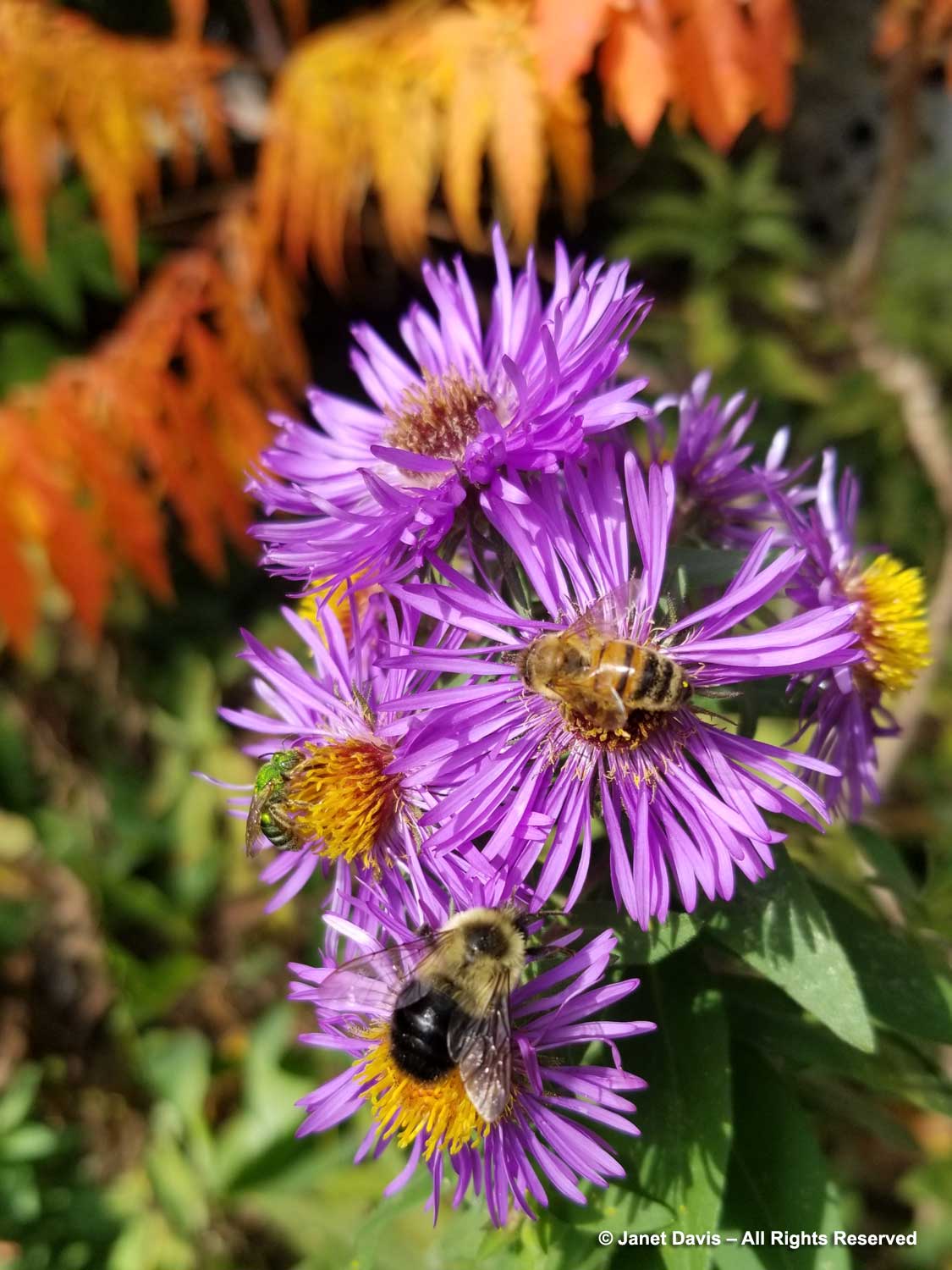
Native Virginia creeper (Parthenocissus quinquefolia) is colouring in my garden now as well. Though it’s not as uniformly red as some vines I’ve seen growing in full sun, it does form fruit which the birds love.
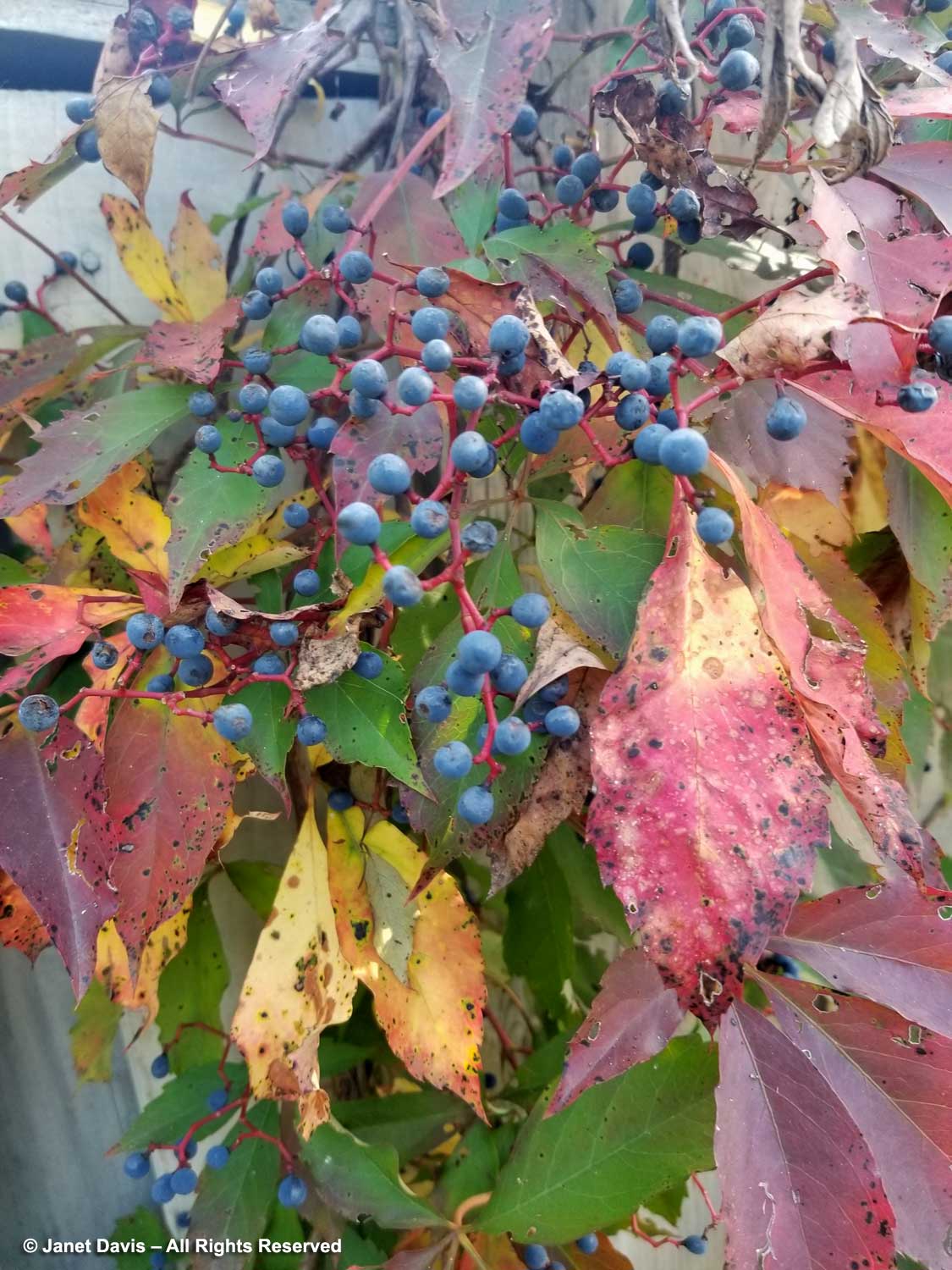
Last autumn, I looked out my kitchen window and saw a pair of Northern flickers snacking on the fruit. It was such fun to see the yellow on the male’s tail feathers – before it was chased away by a red squirrel.
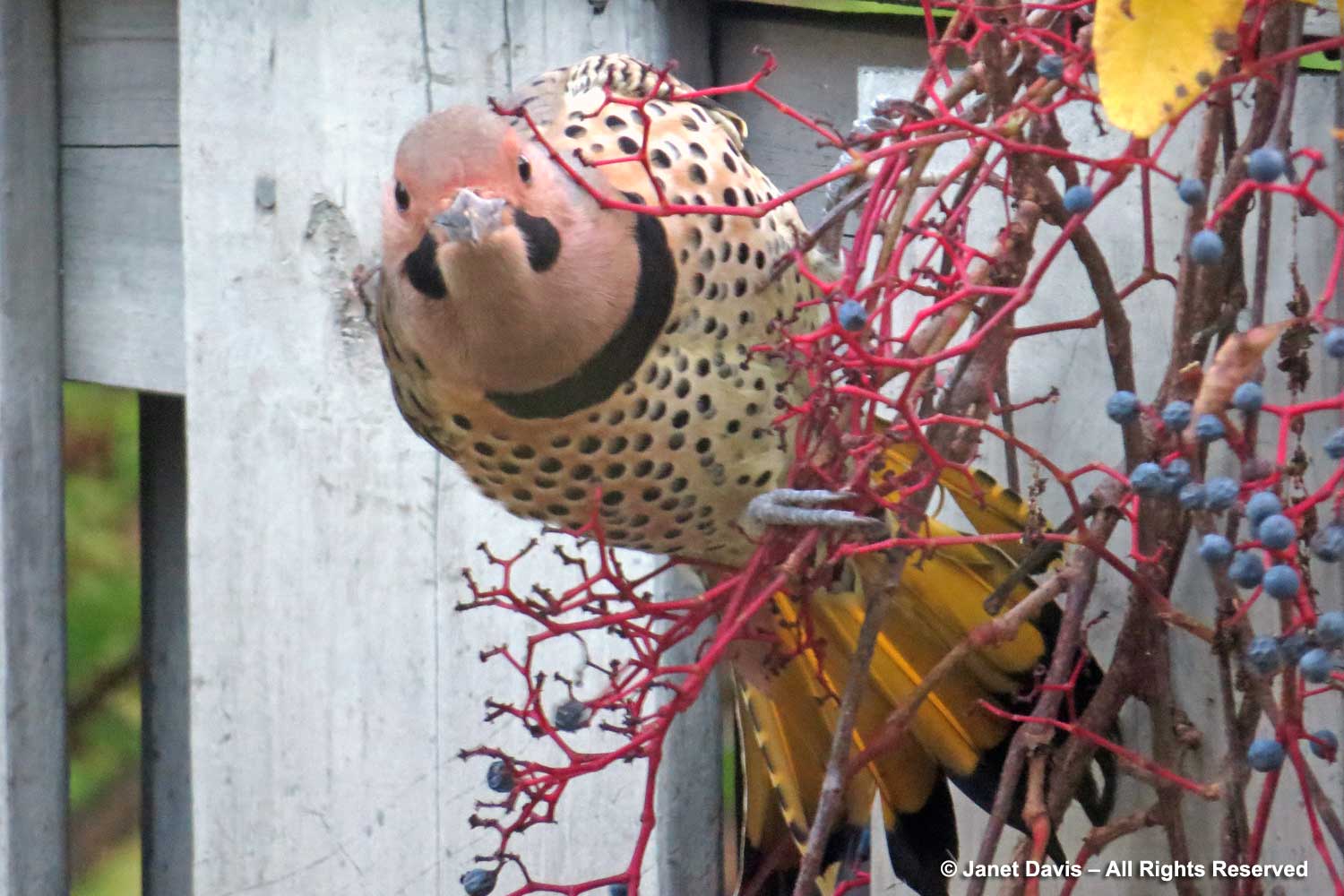
Finally, here’s a little bouquet to mark Fairy Crown #25 and the last flowers in my garden. But it’s not the end of the crowns, not quite yet. Stay tuned…
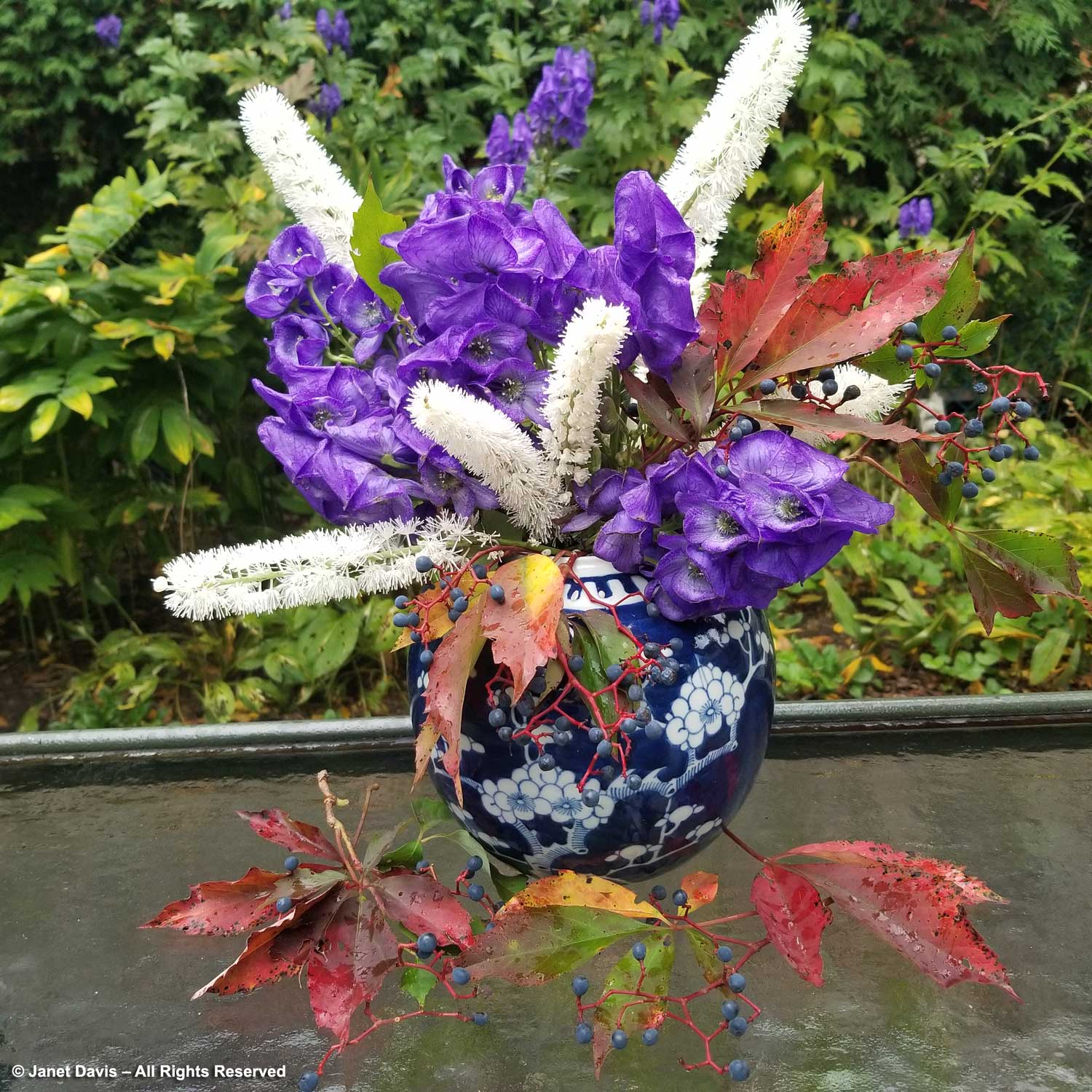
******
Want to catch up with my blogs on the earlier fairy crowns? Here they are:
#1 – Spring Awakening
#2 – Little Blossoms for Easter
#3 – The Perfume of Hyacinths
#4 – Spring Bulb Extravaganza
#5 – A Crabapple Requiem
#6 – Shady Lady
#7 – Columbines & Wild Strawberries on Lake Muskoka
#8 – Lilac, Dogwood & Alliums
#9 – Borrowed Scenery & an Azalea for Mom
#10 – June Blues on Lake Muskoka
#11 – Sage & Catmint for the Bees
#12 – Penstemons & Coreopsis in Muskoka
#13 – Ditch Lilies & Serviceberries
#14 – Golden Yarrow & Orange Milkweed
#15 – Echinacea & Clematis
#16 – A Czech-German-All American Blackeyed Susan
#17- Beebalm & Yellow Daisies at the Lake
#18- Russian Sage & Blazing Stars
#19-My Fruitful Life
#20-Cup Plant, Joe Pye & Ironweed
#21-Helianthus & Hummingbirds
#22-Grasses, Asters & Goldenrod
#23-Sedums, Pass-Along Plants & Fruit for the Birds
#24-Fall Asters & Showy Goldenrod for Thanksgiving






